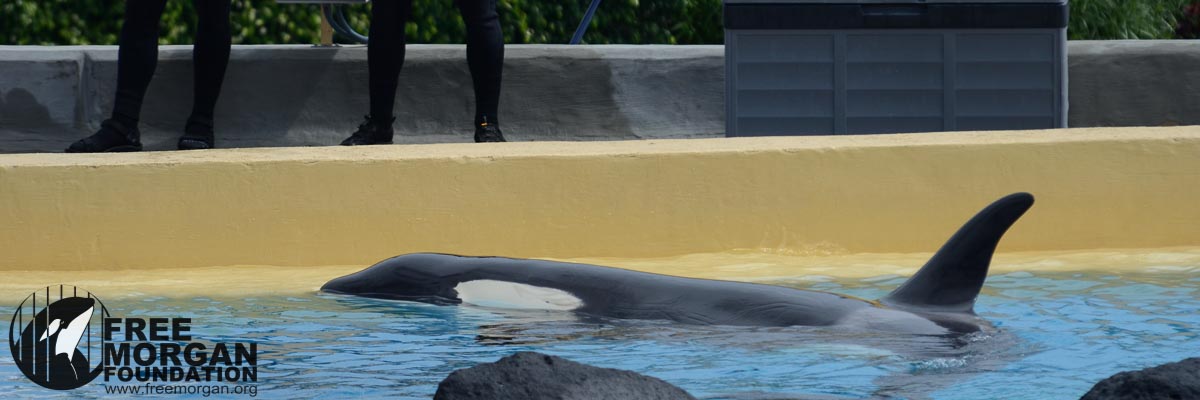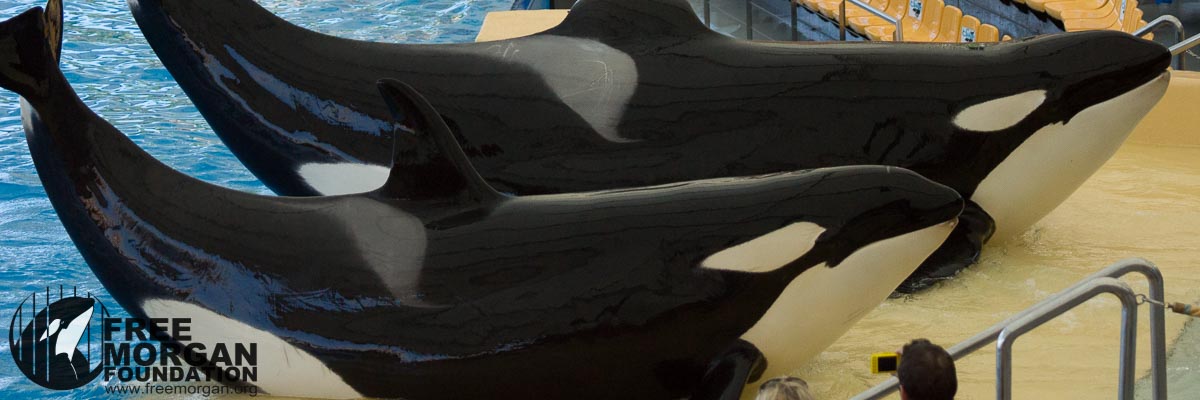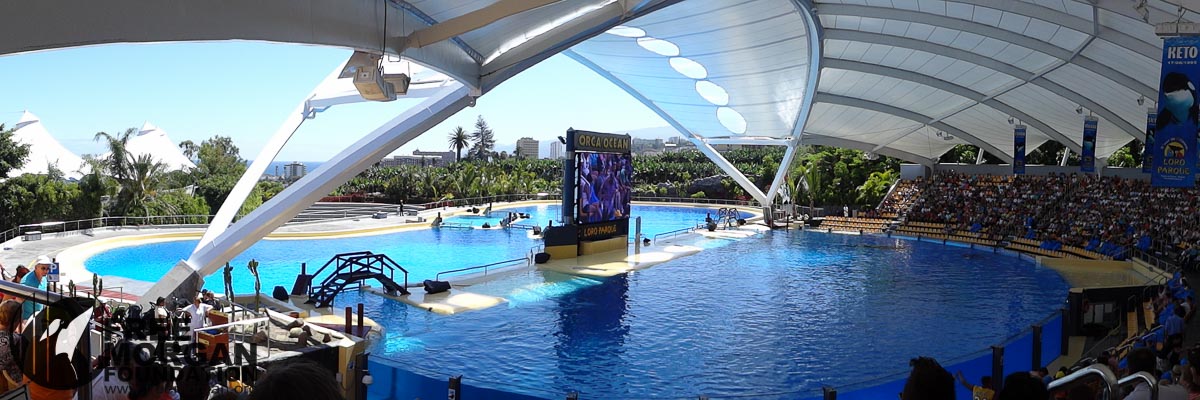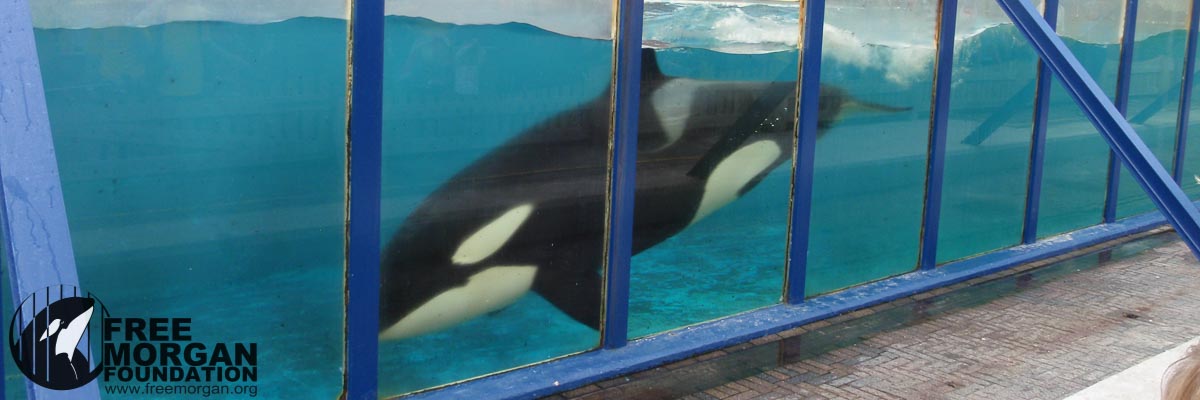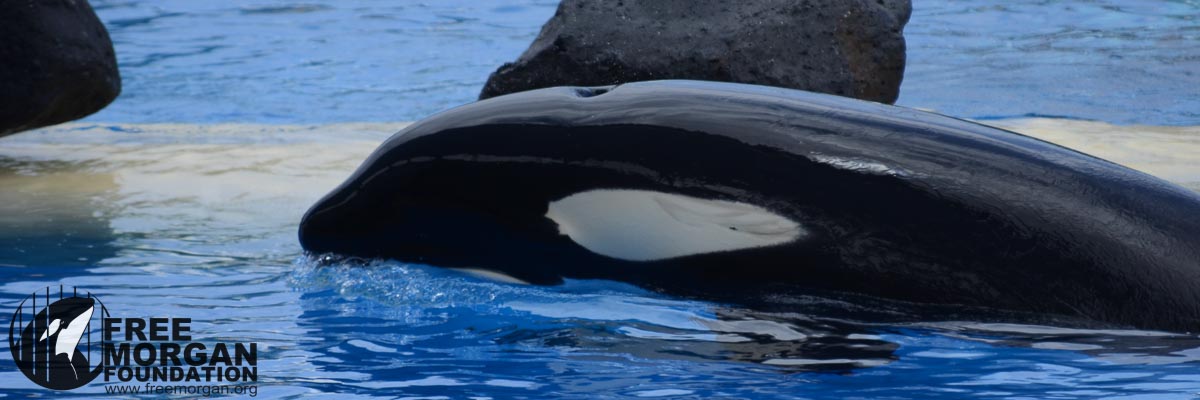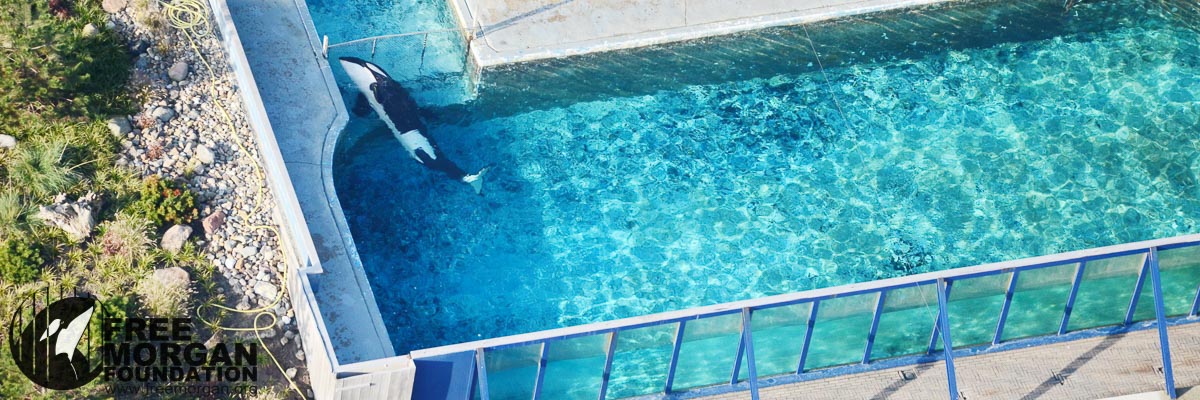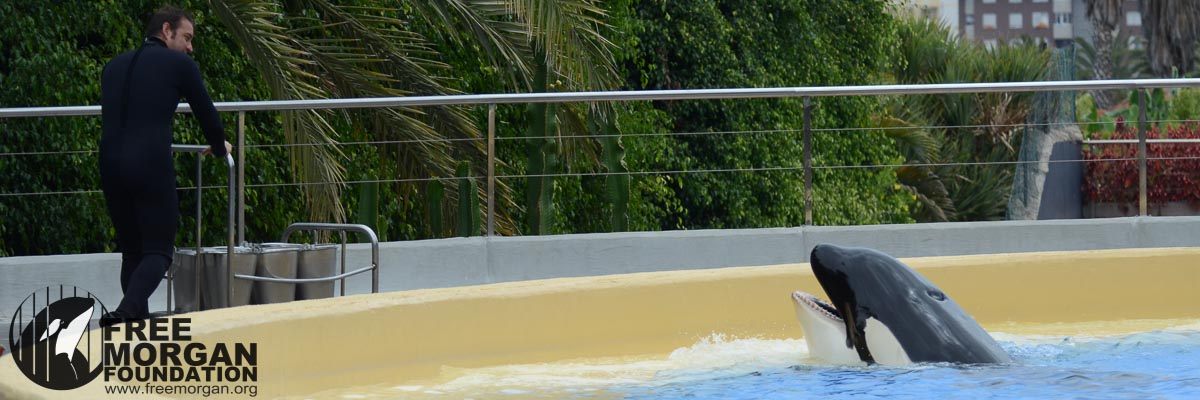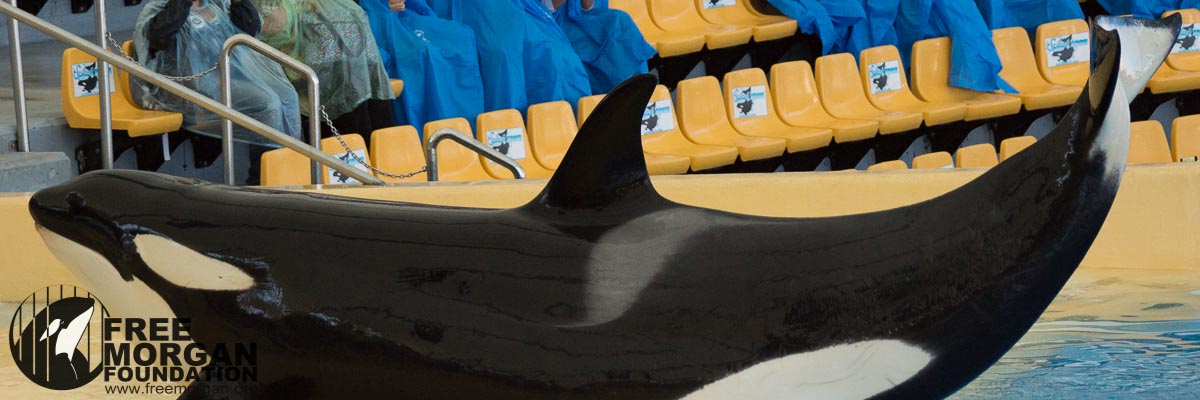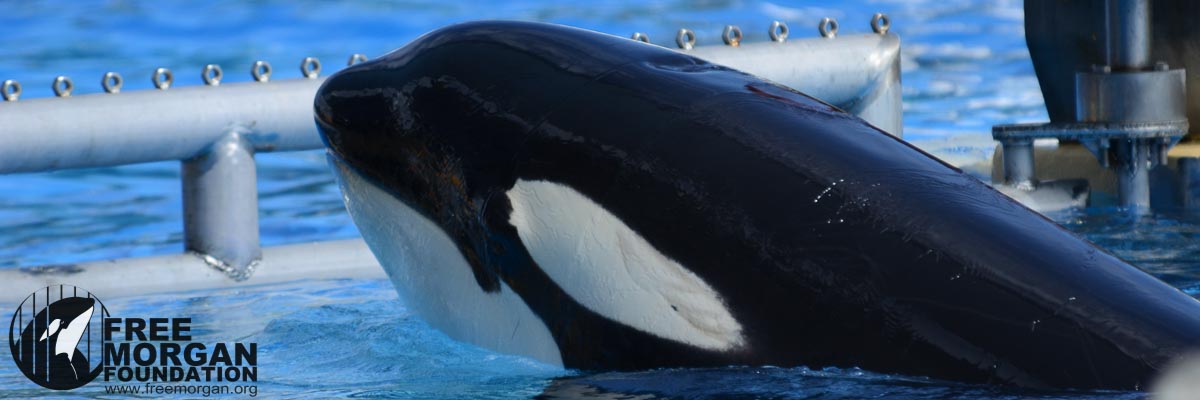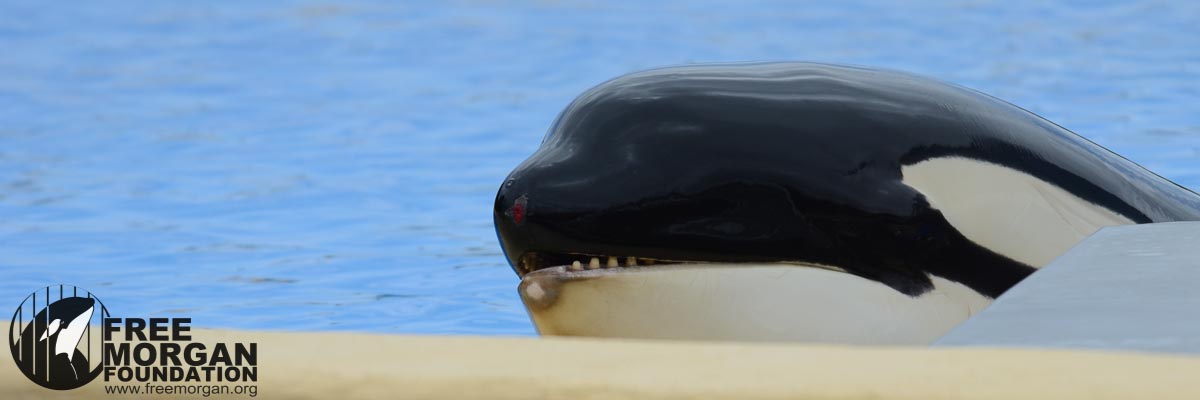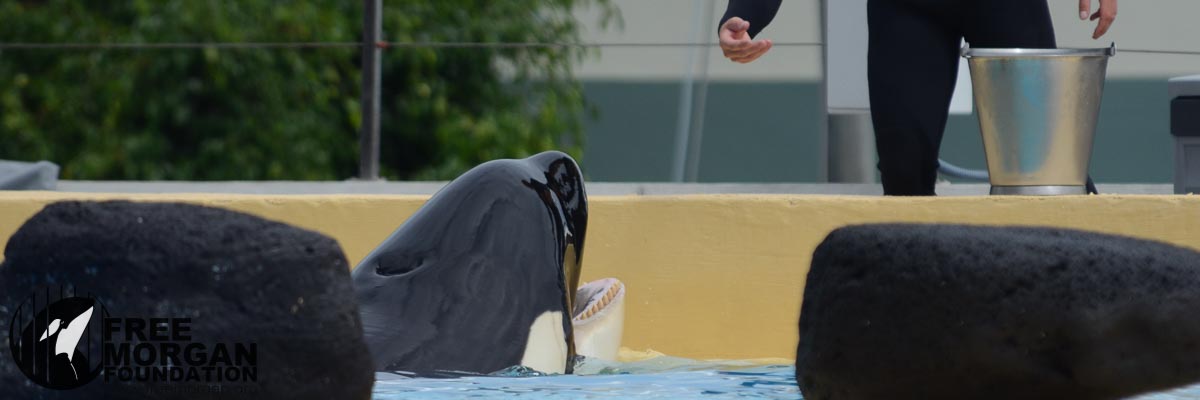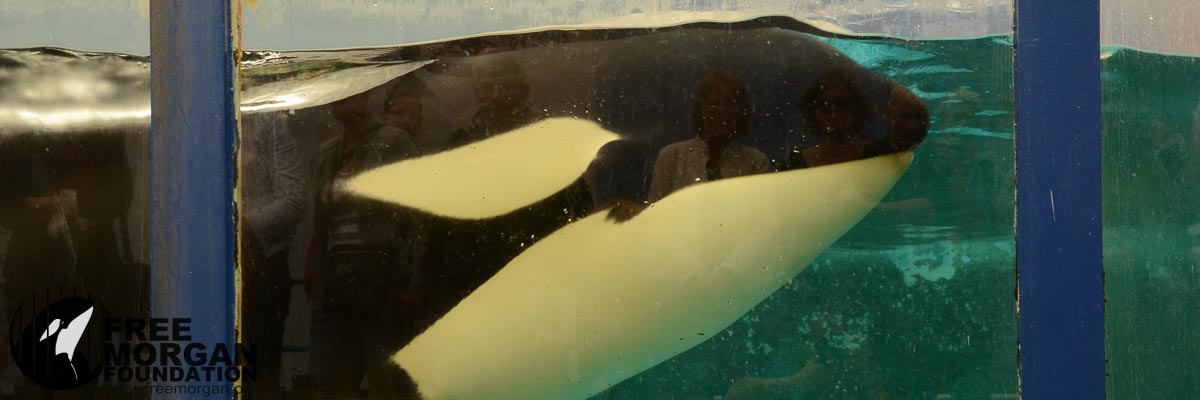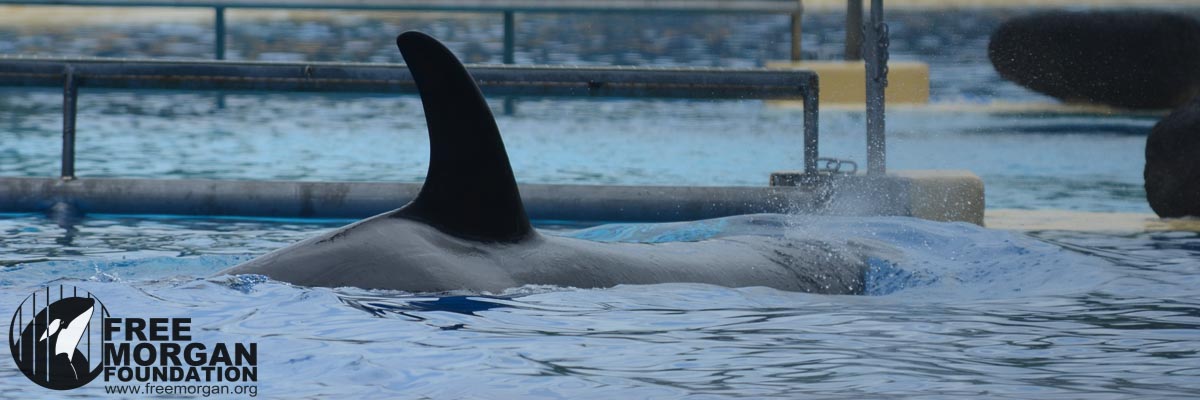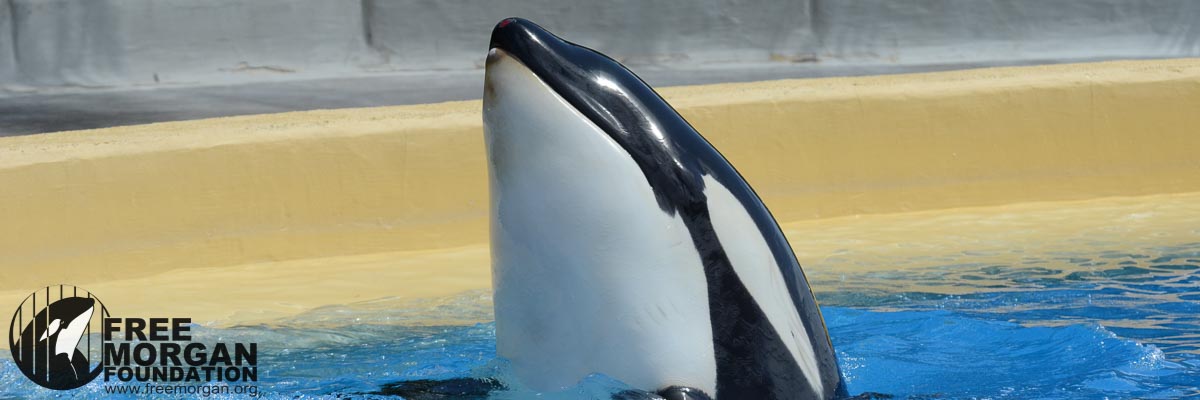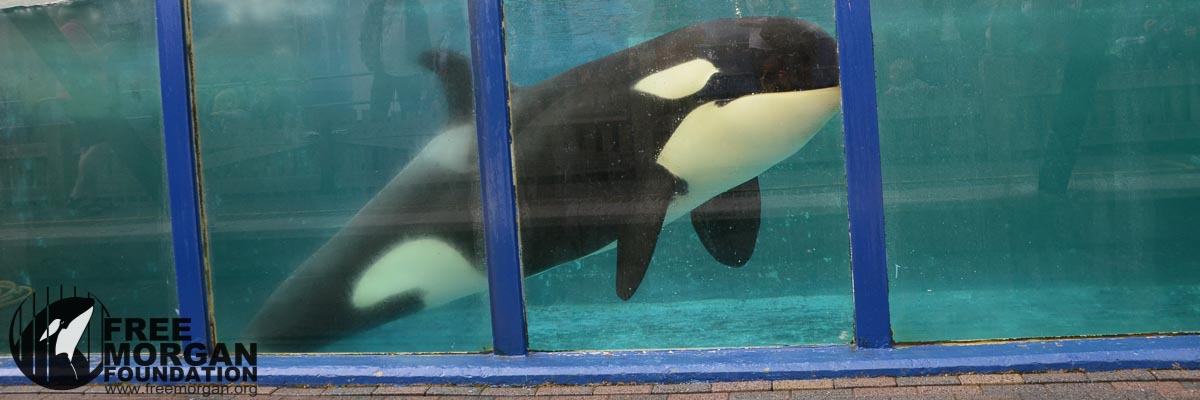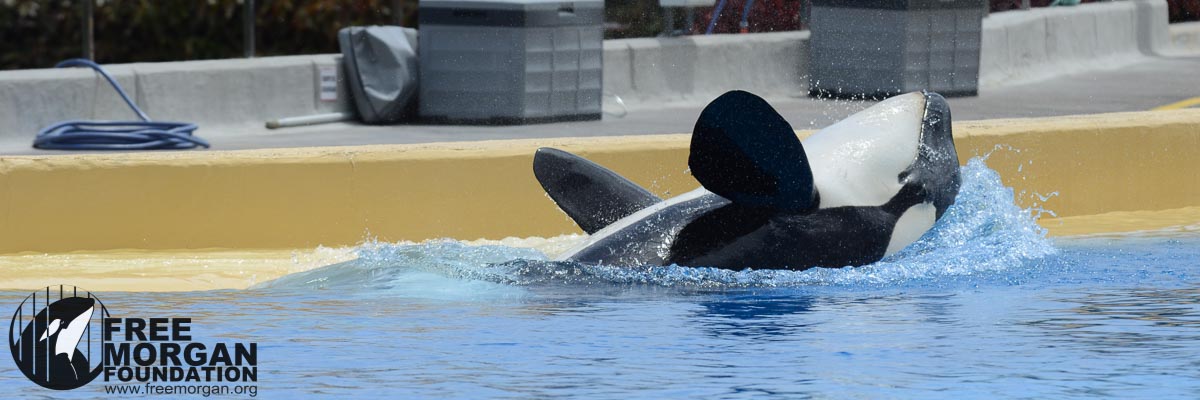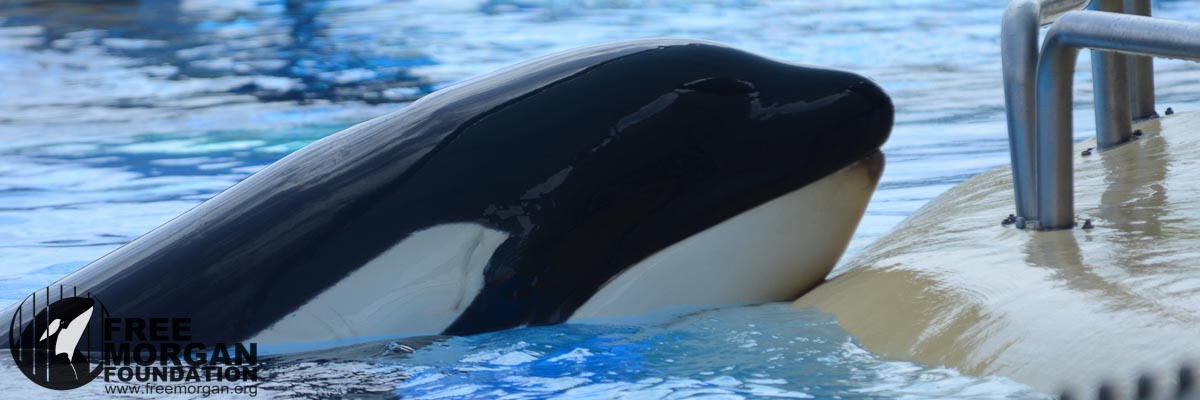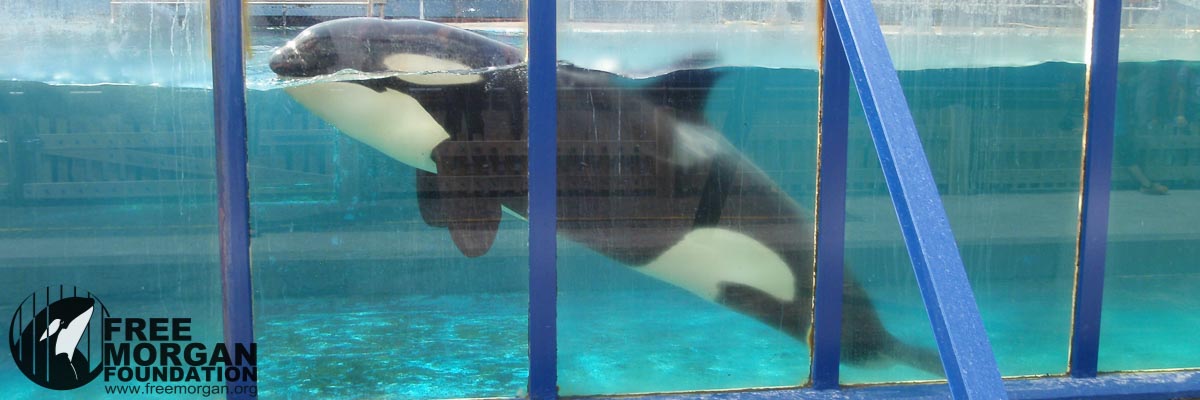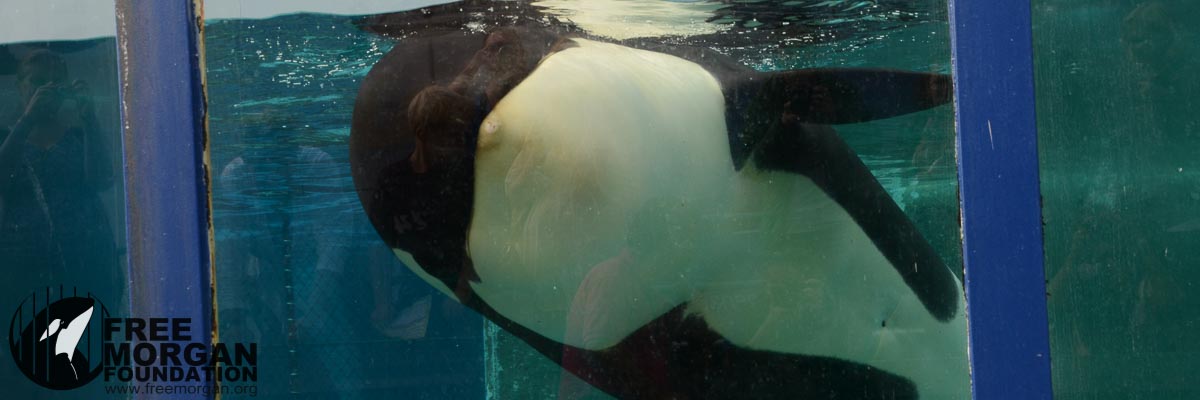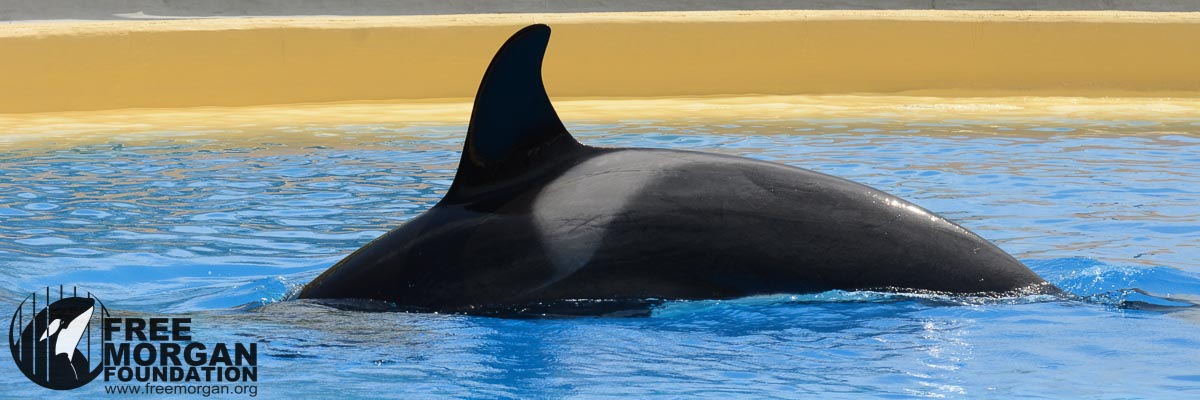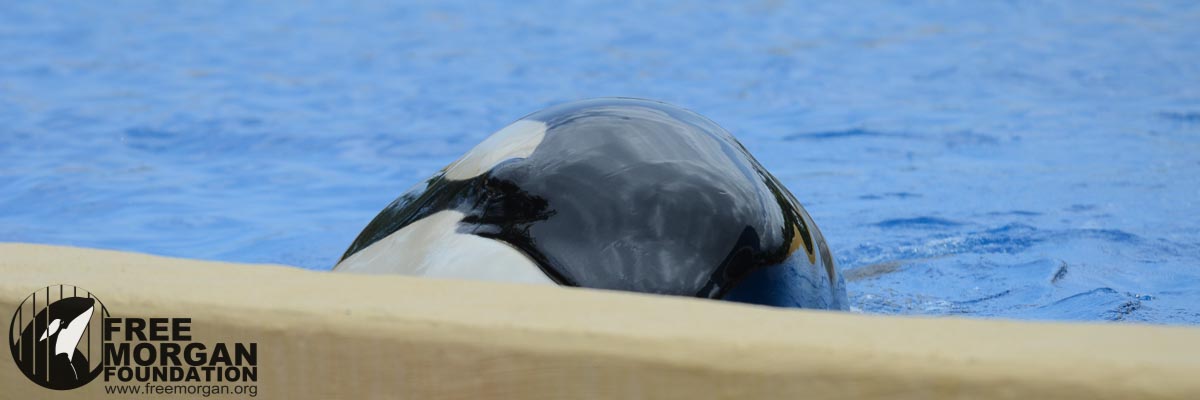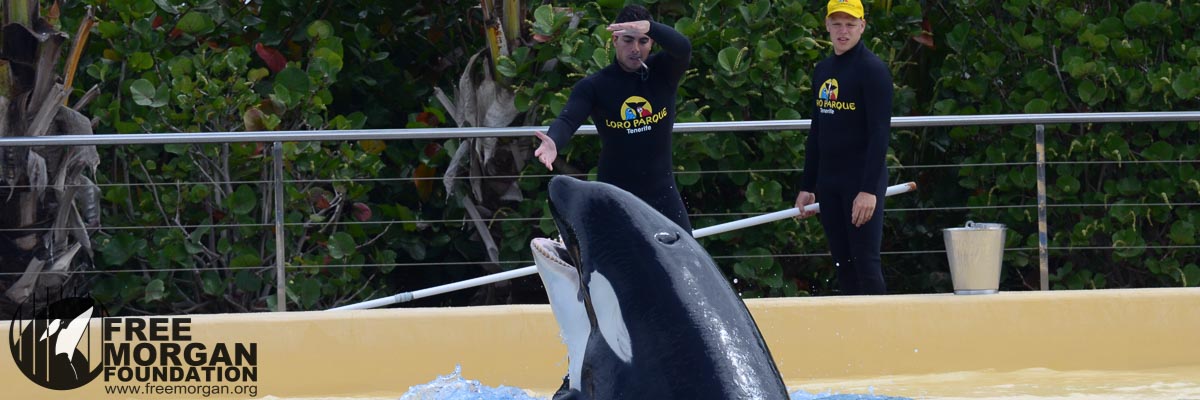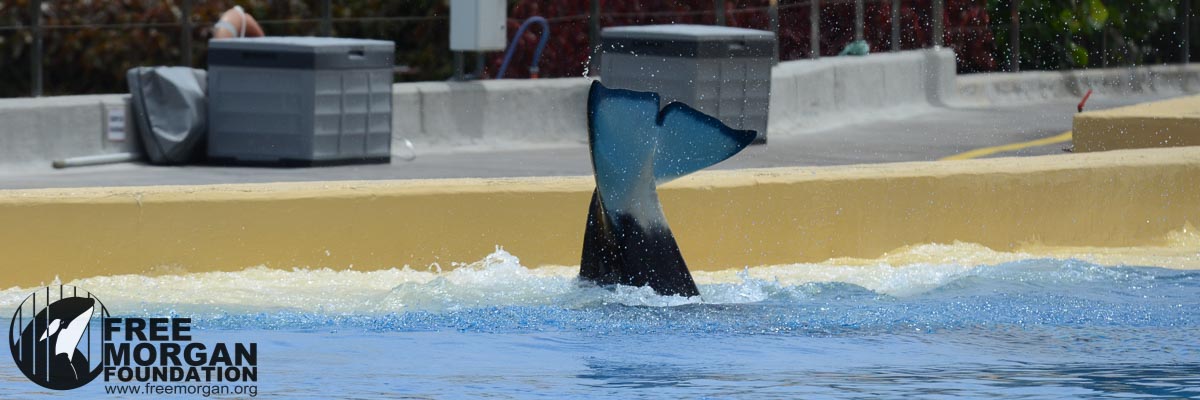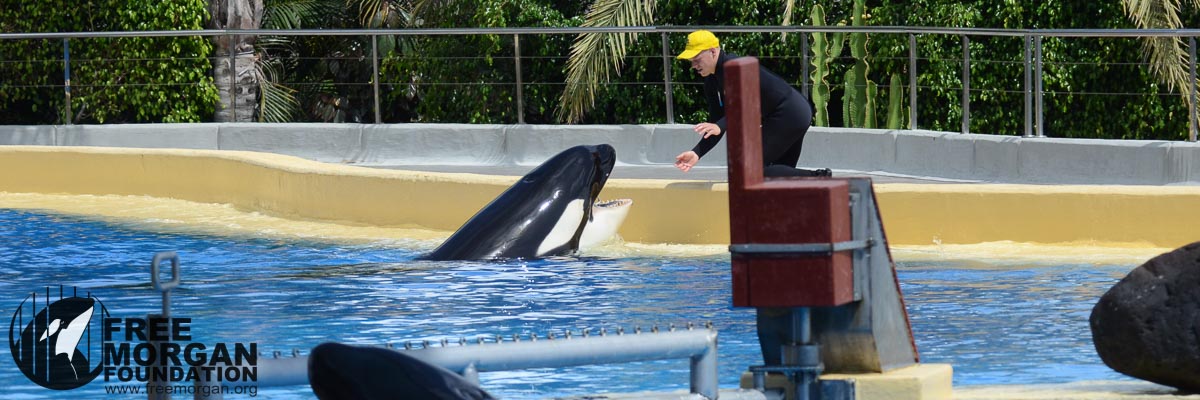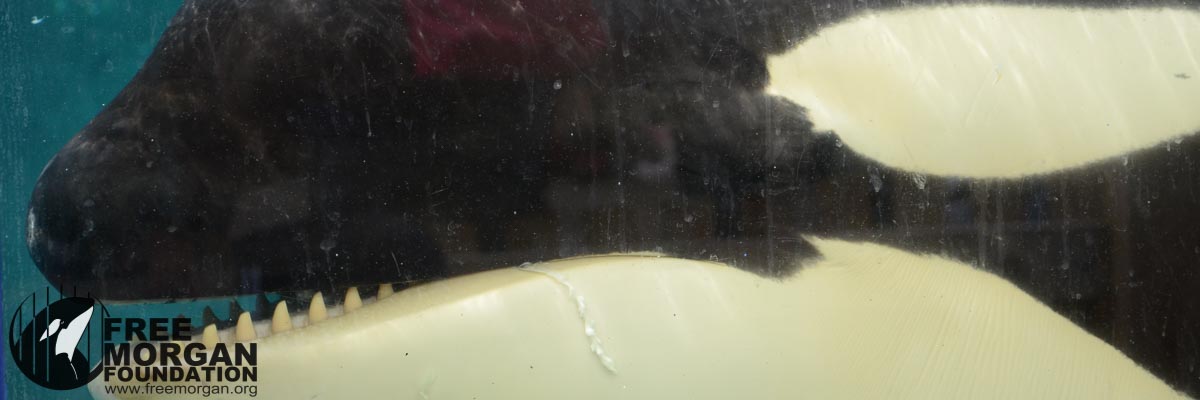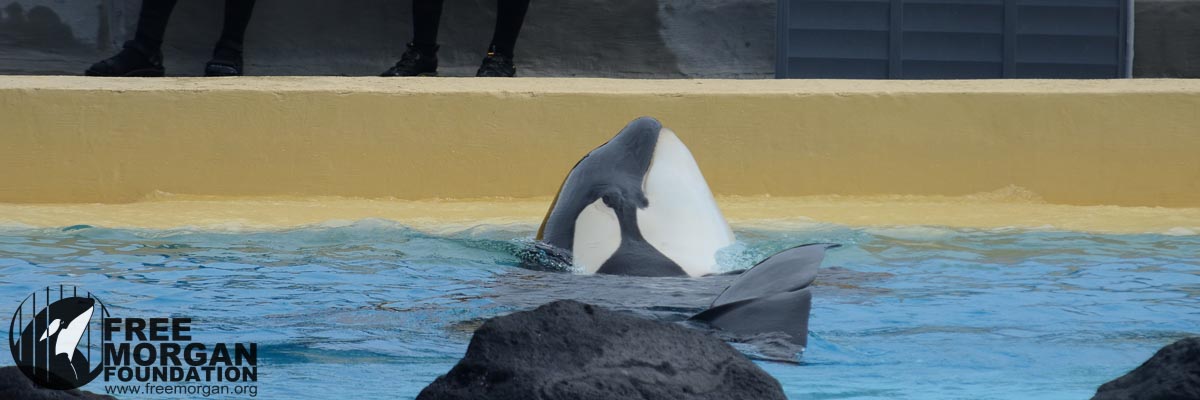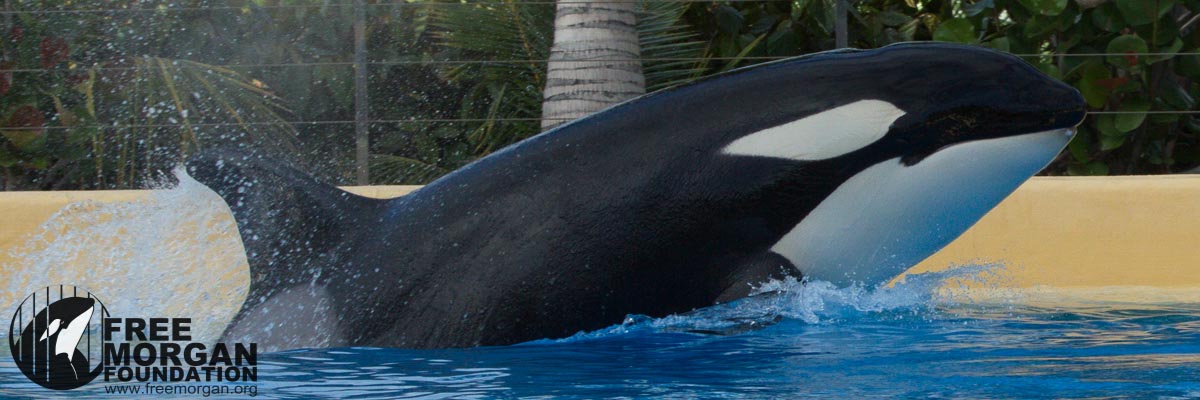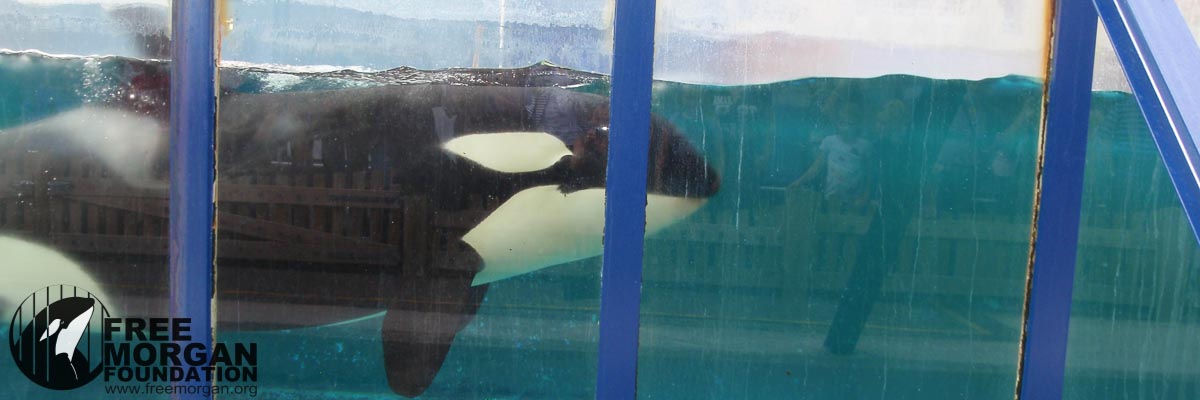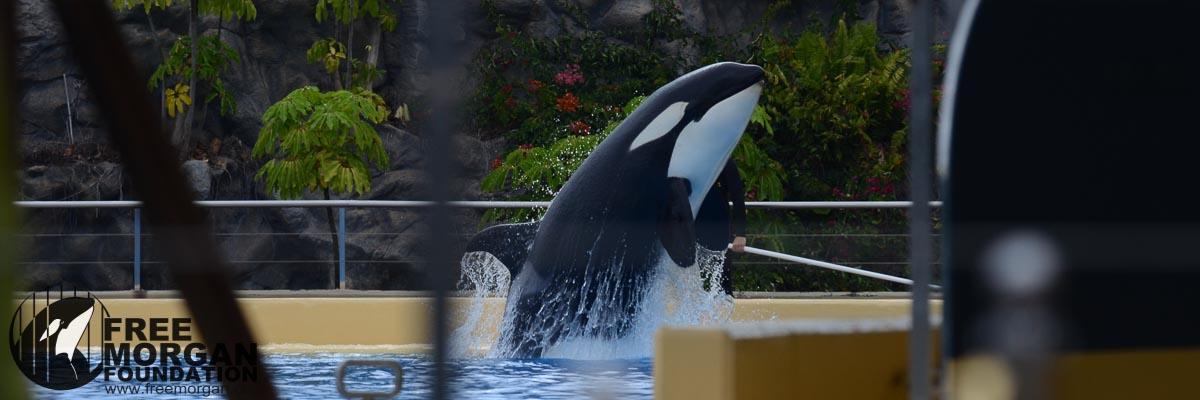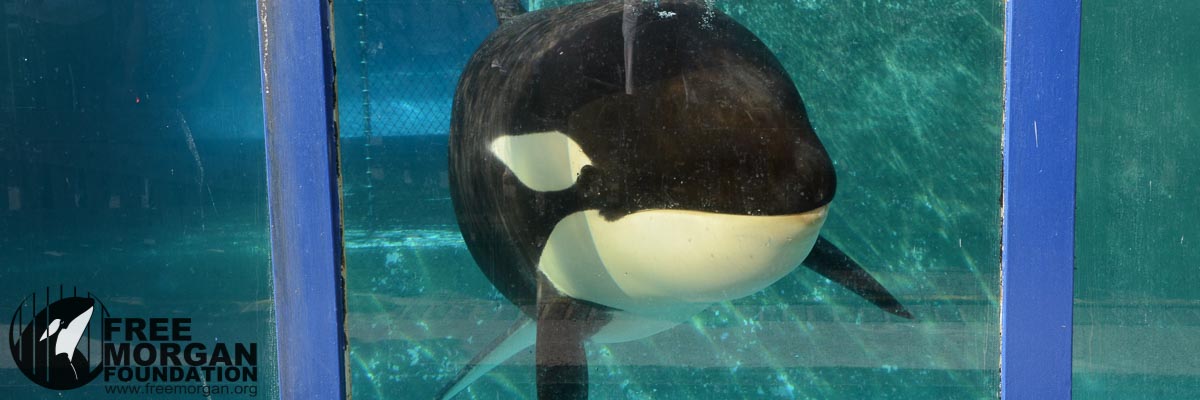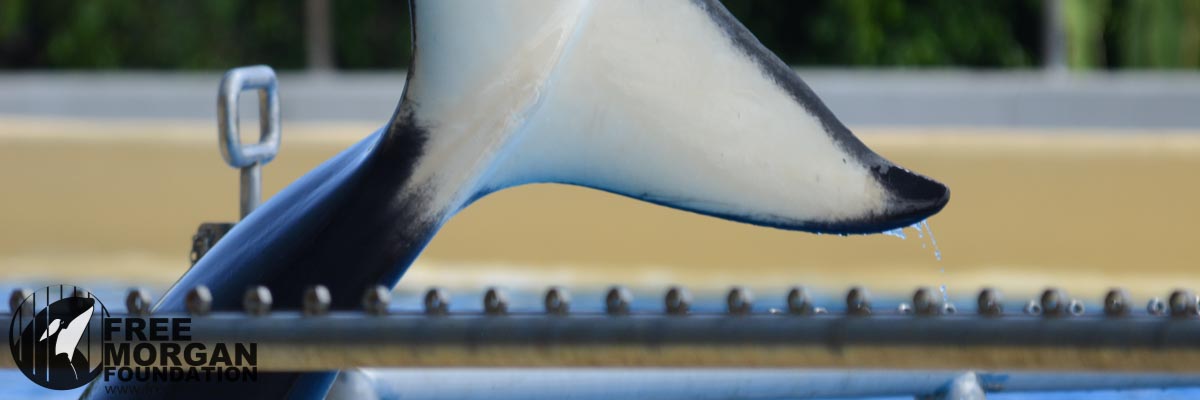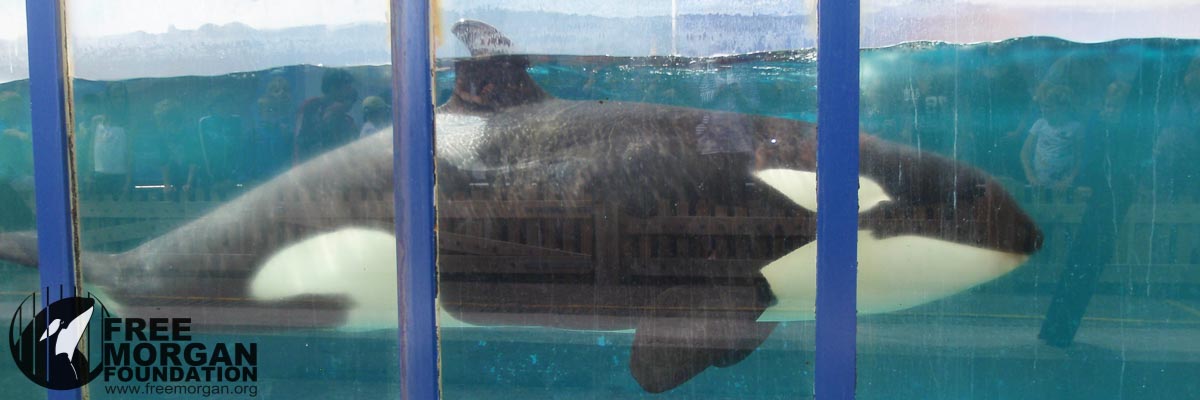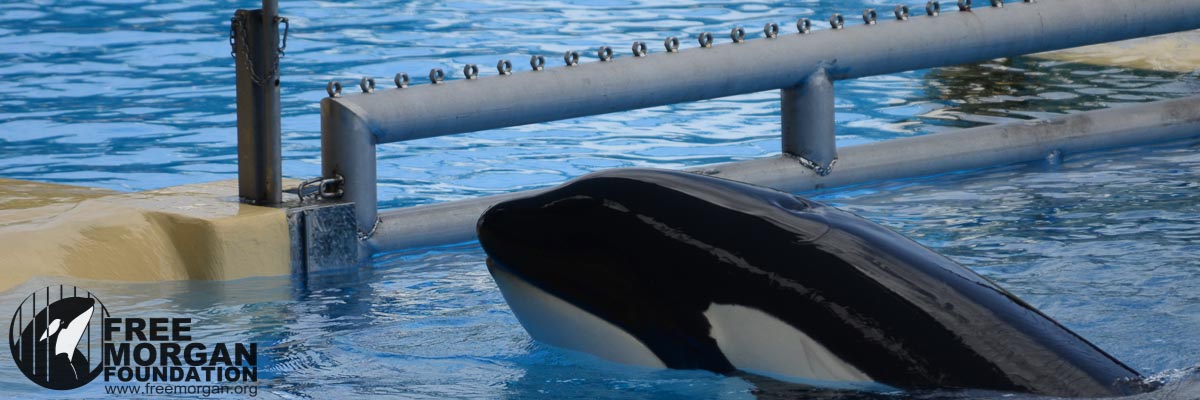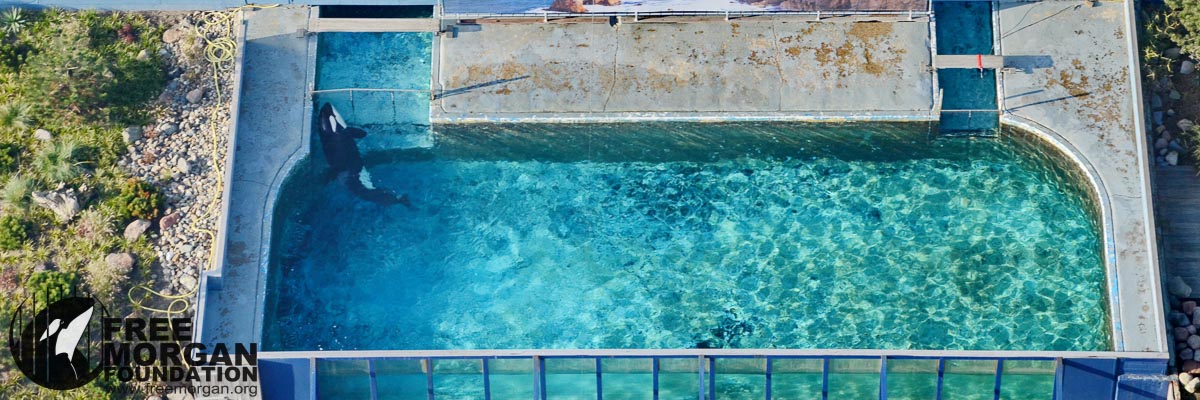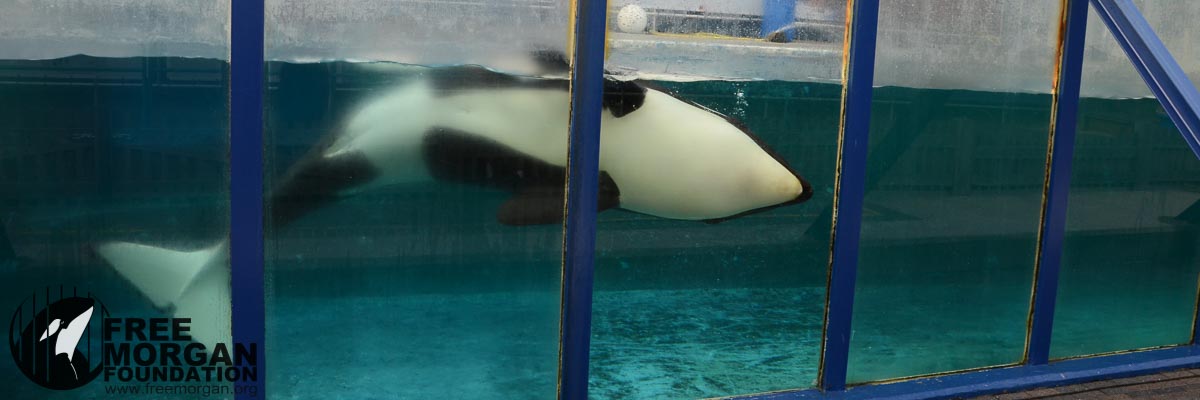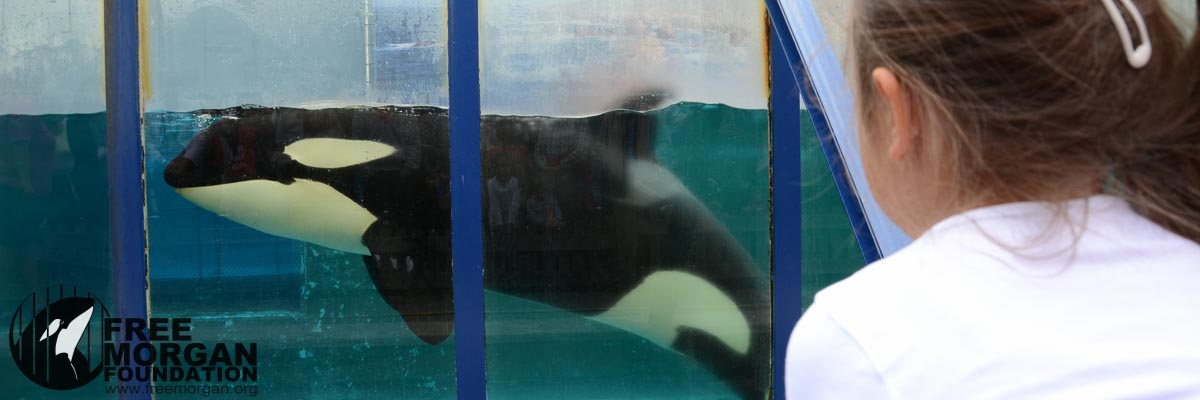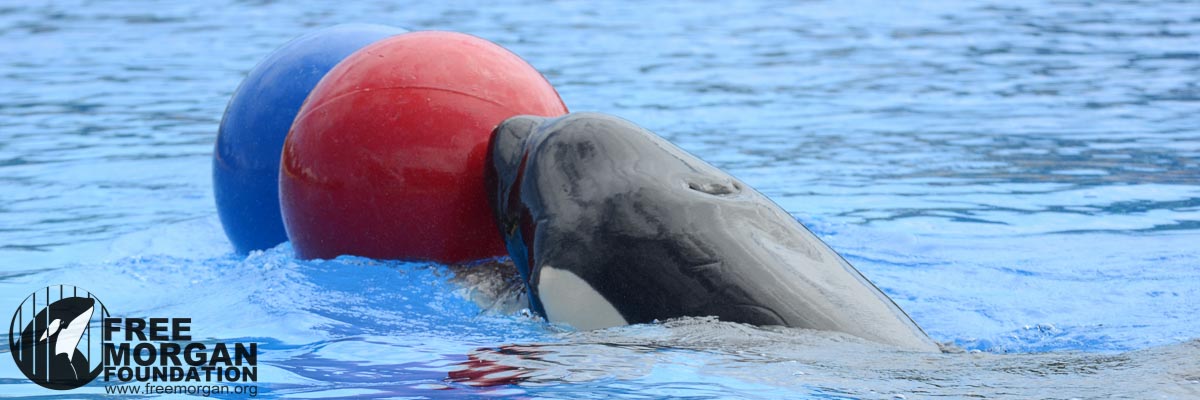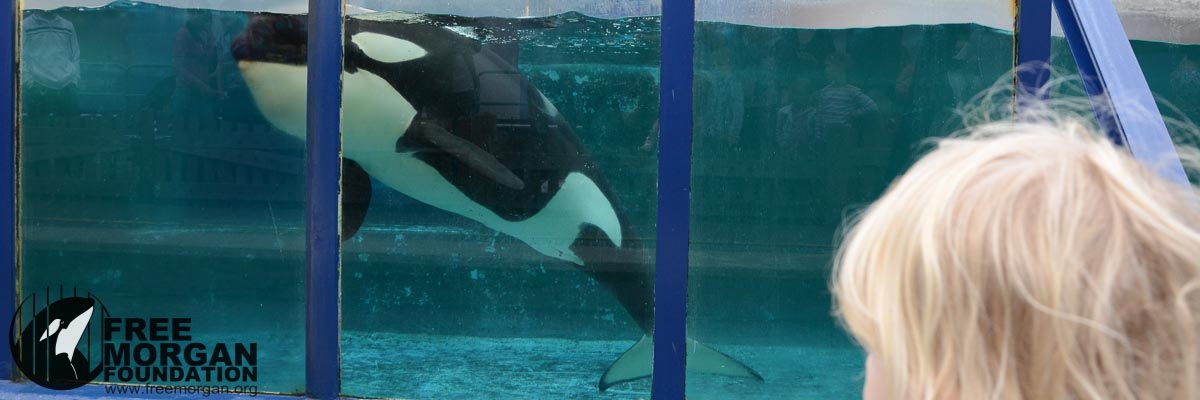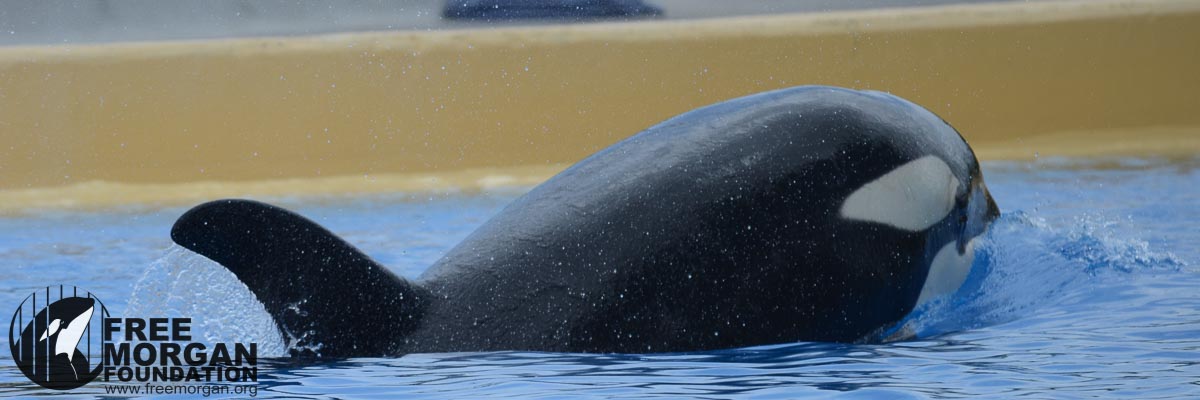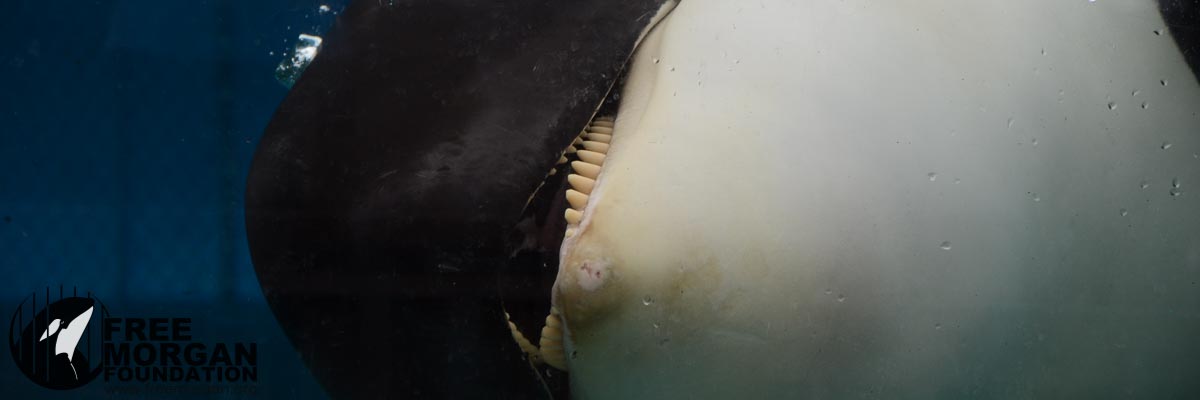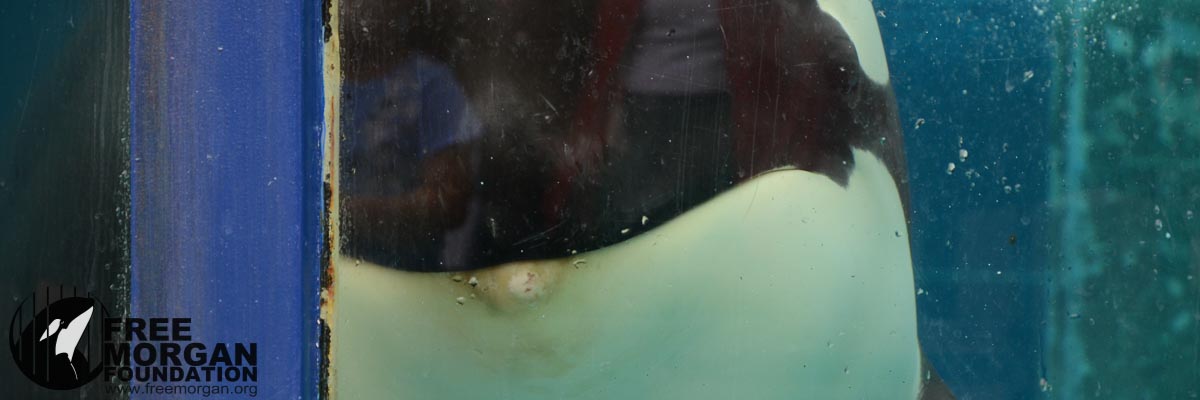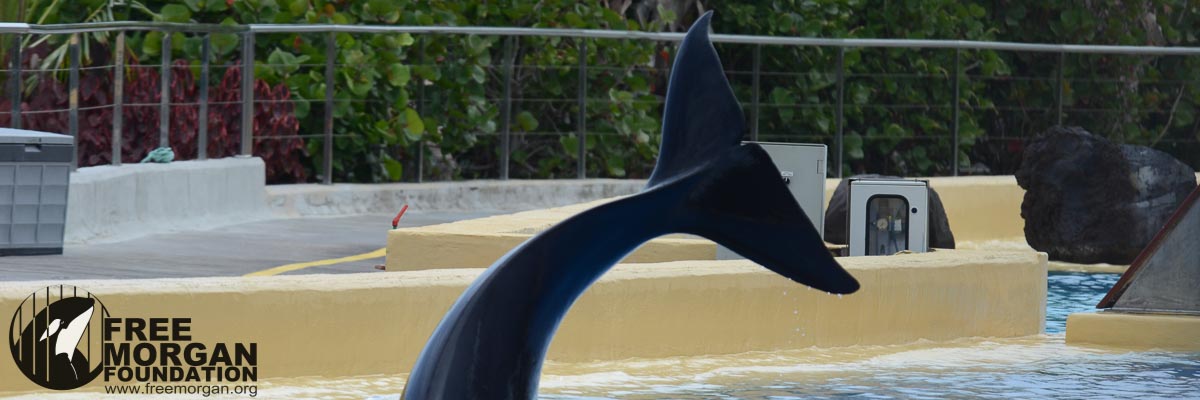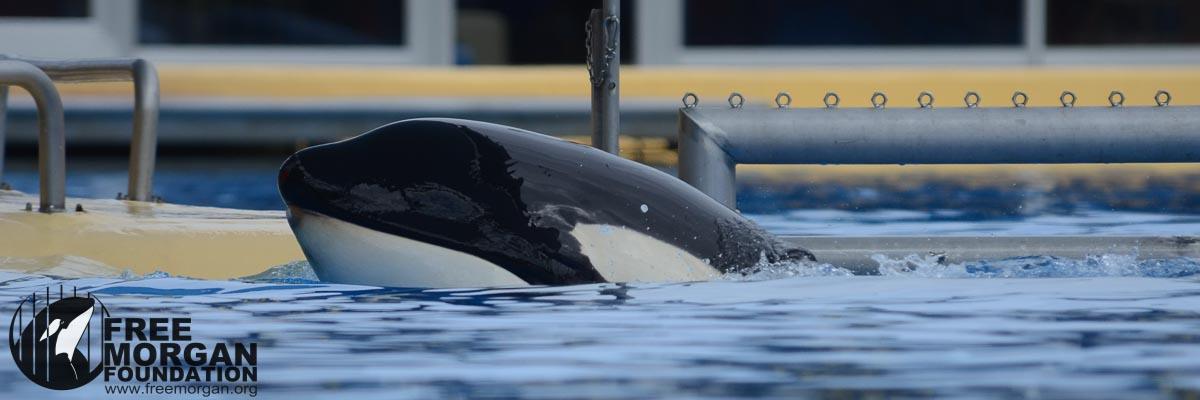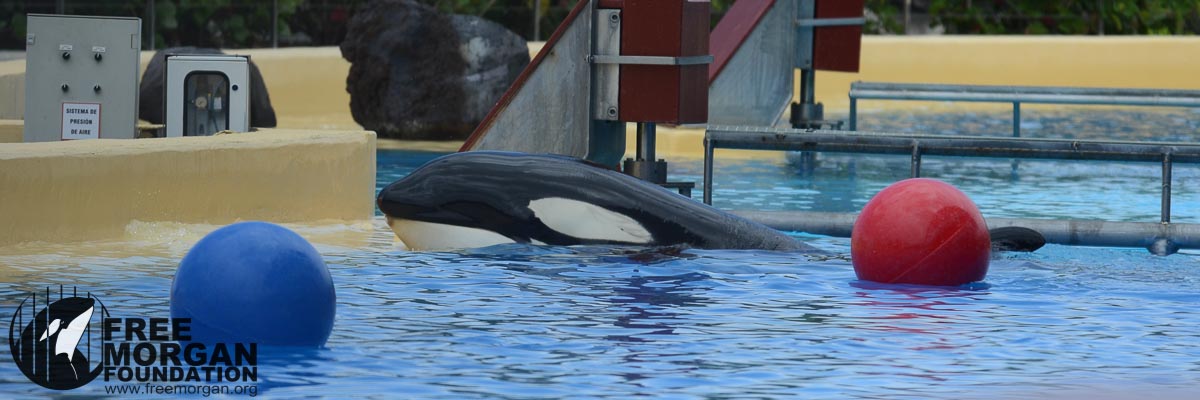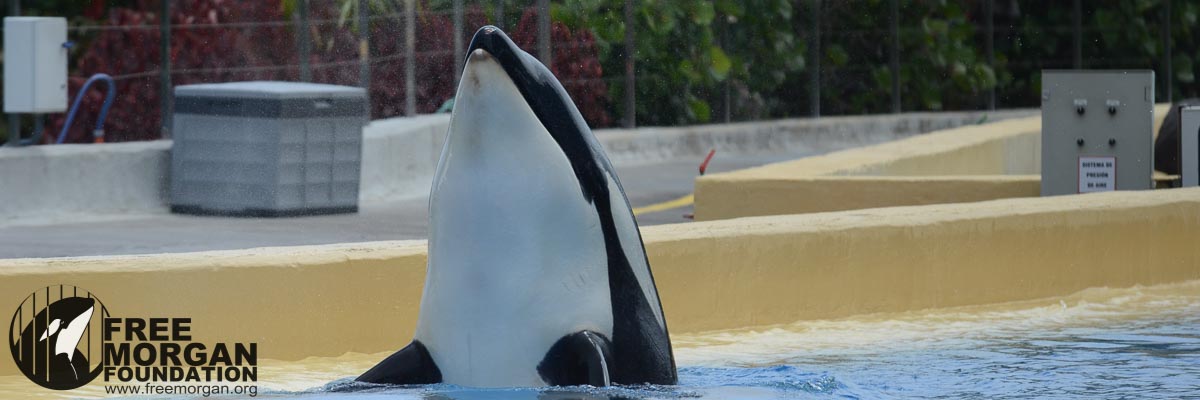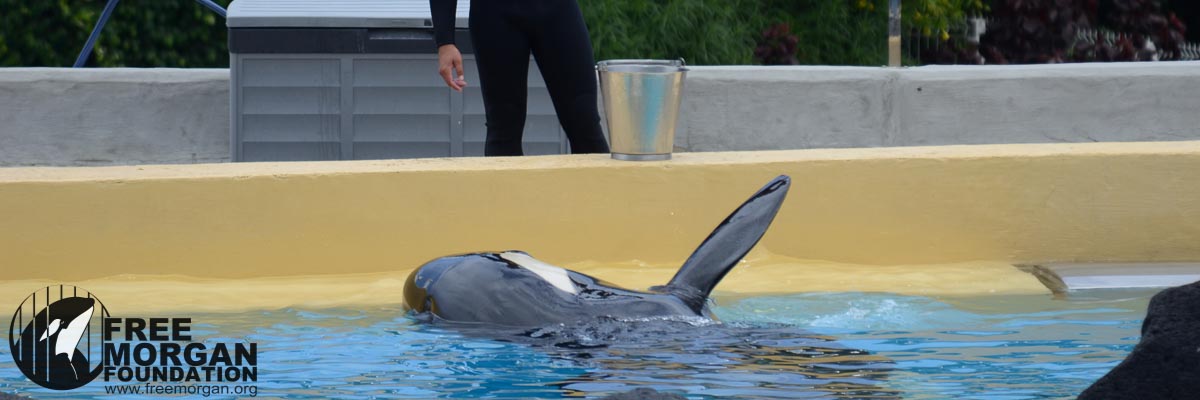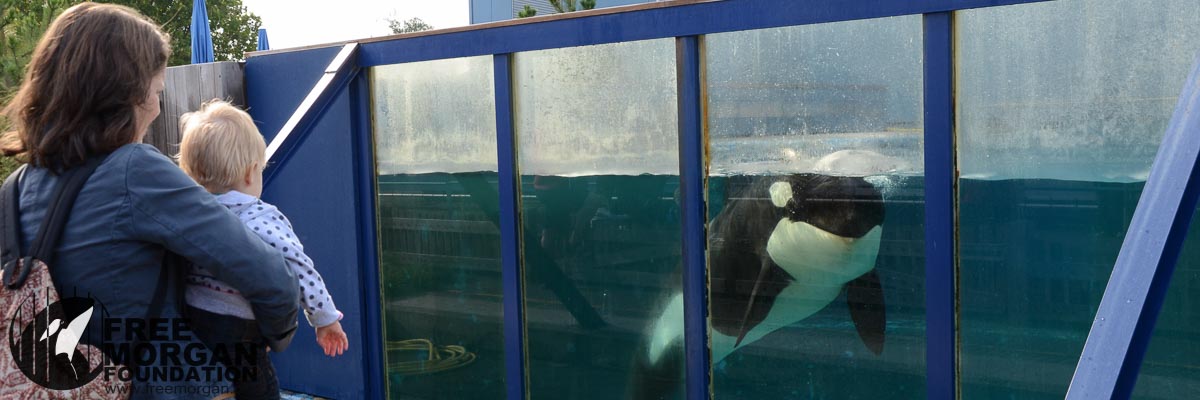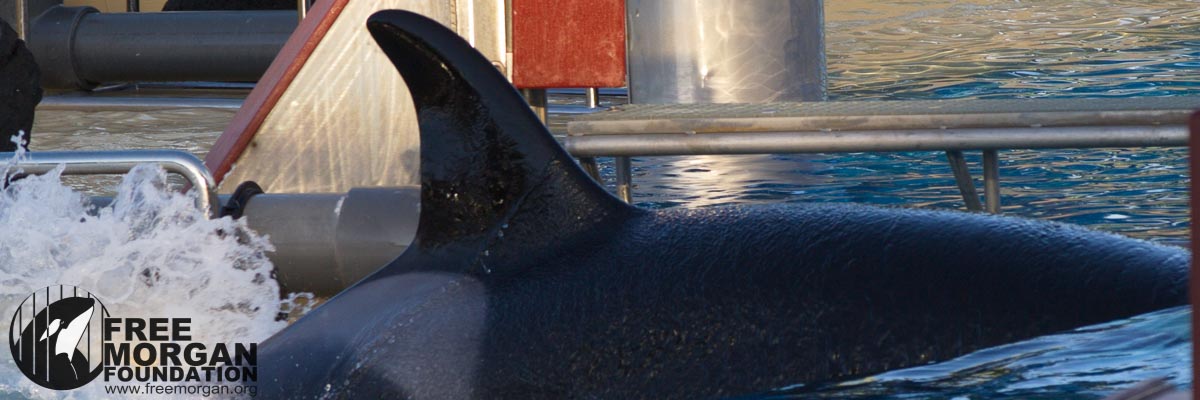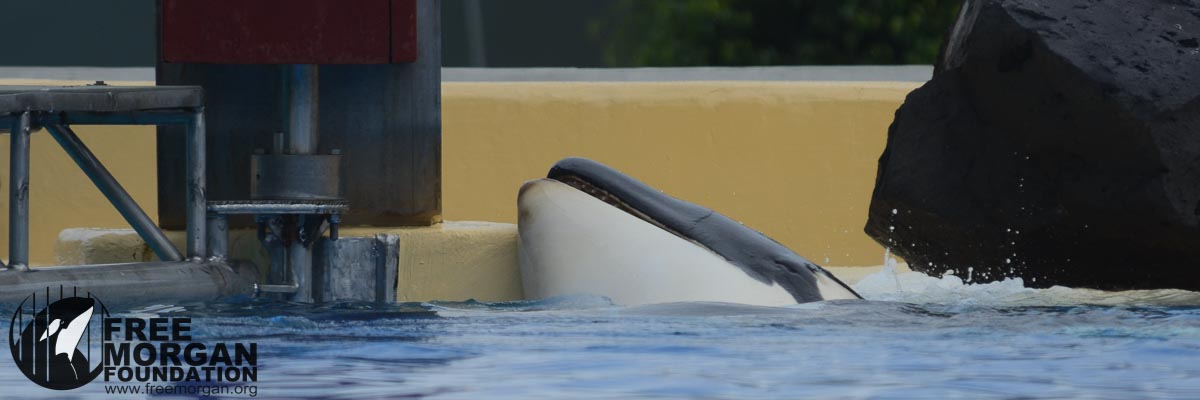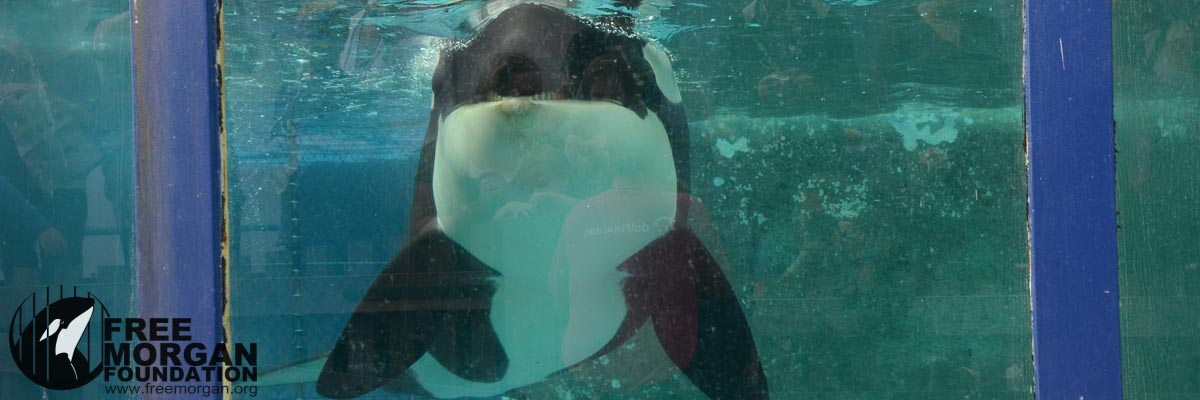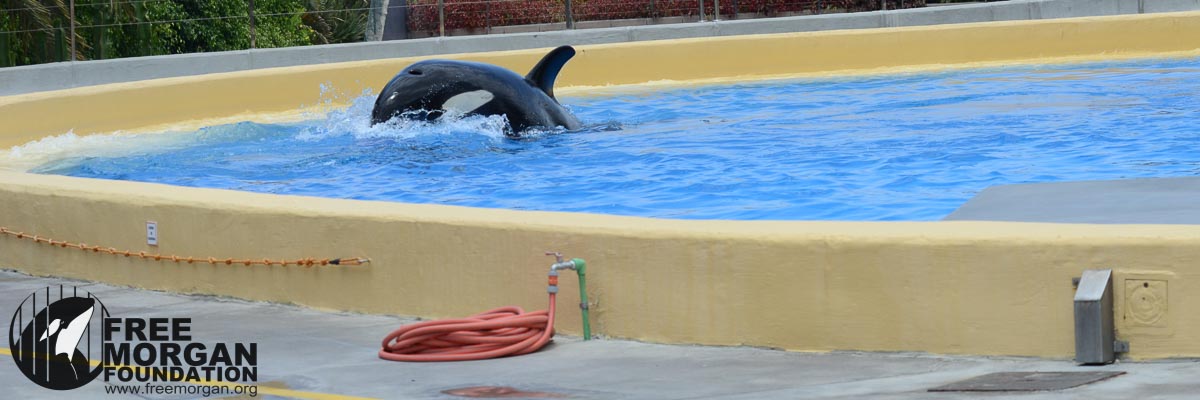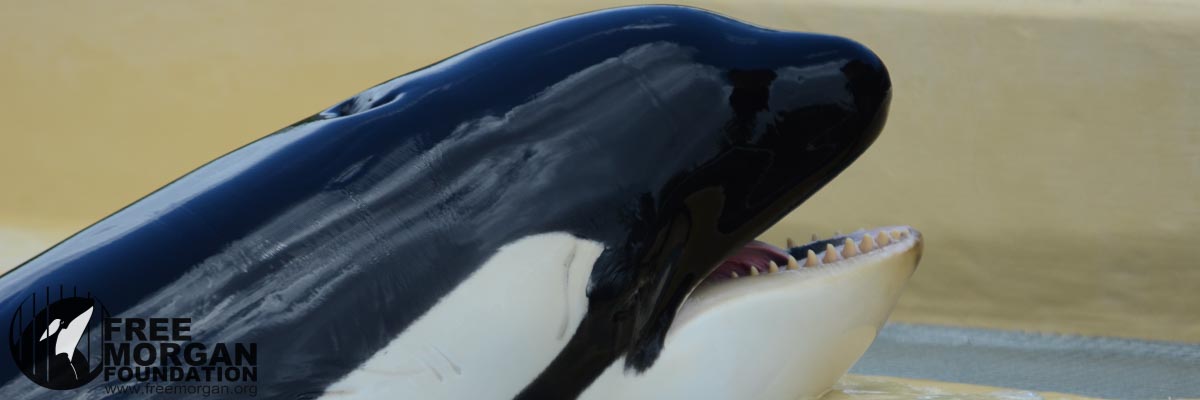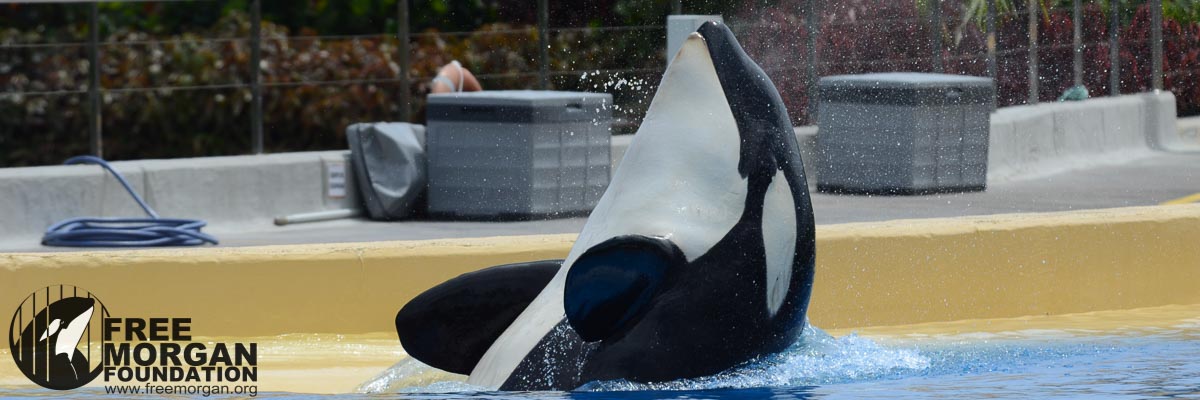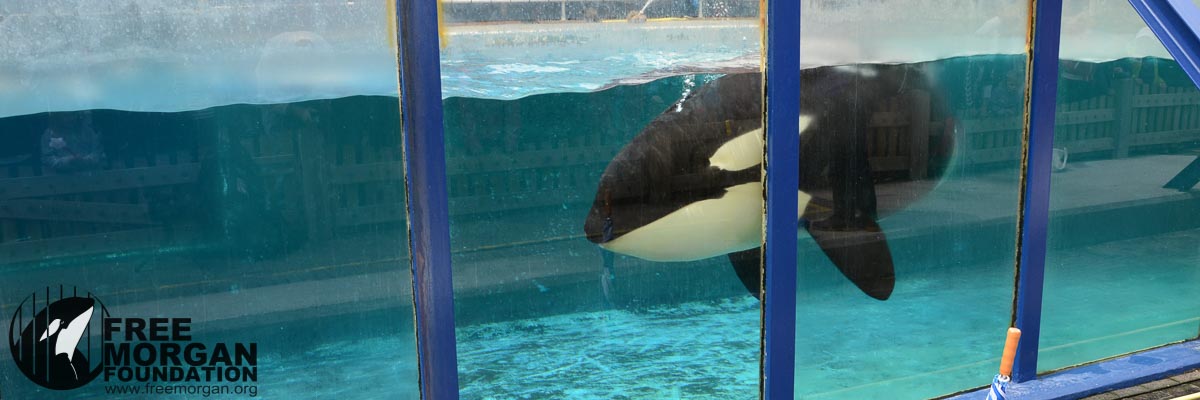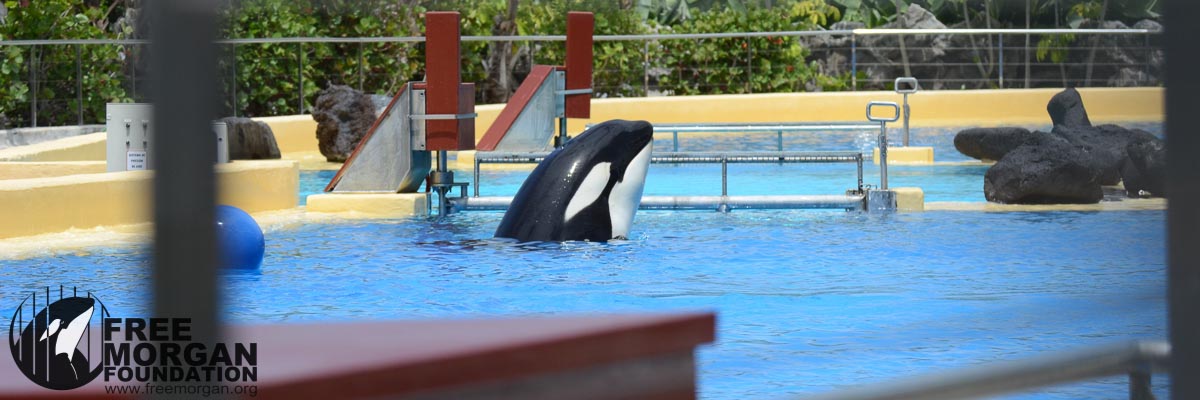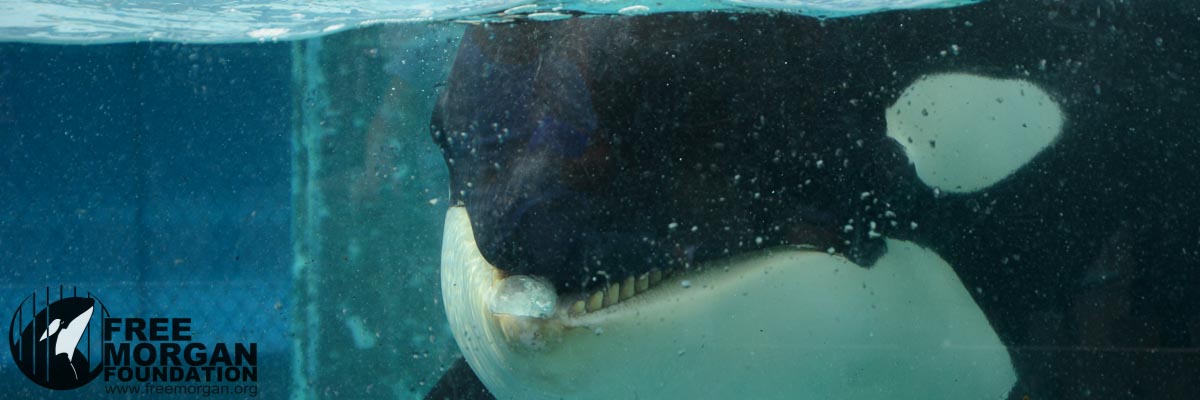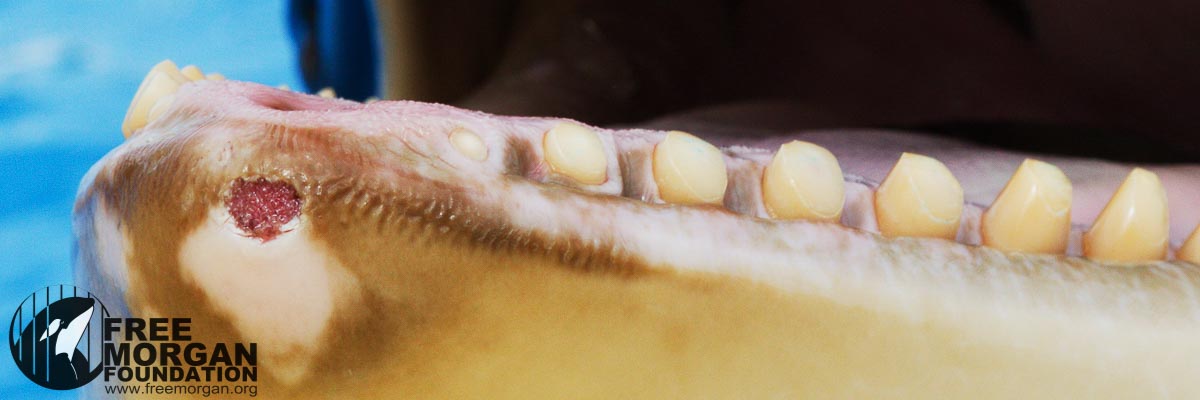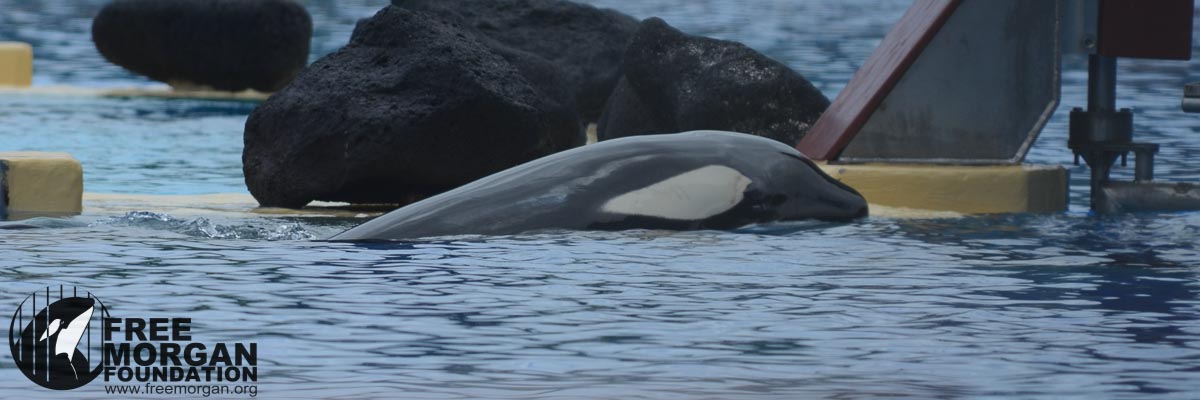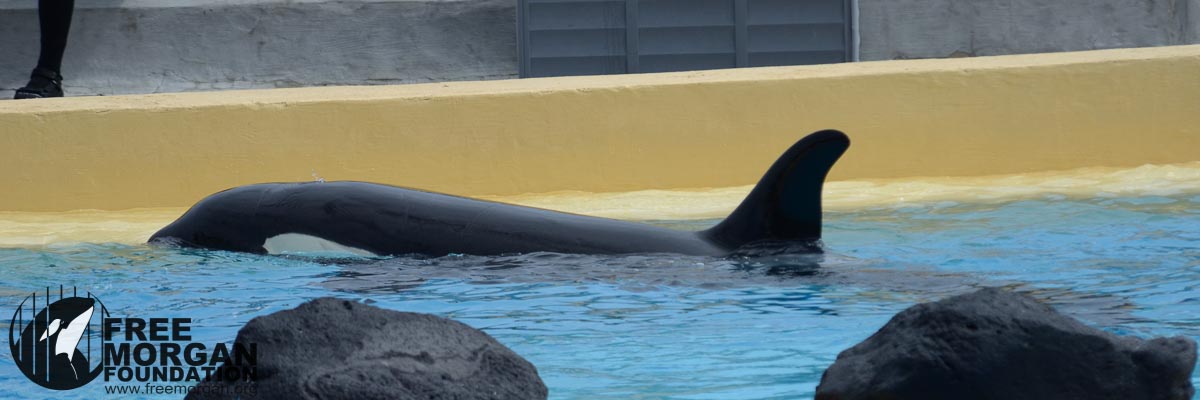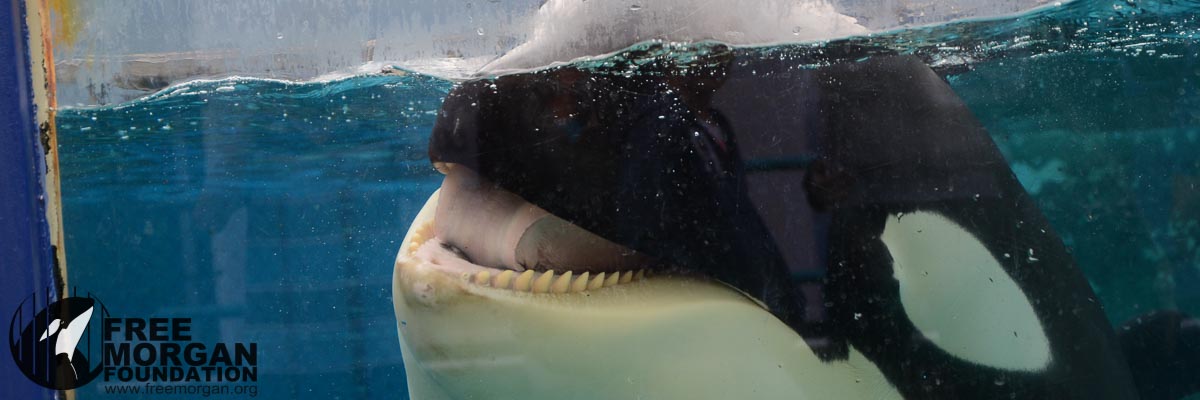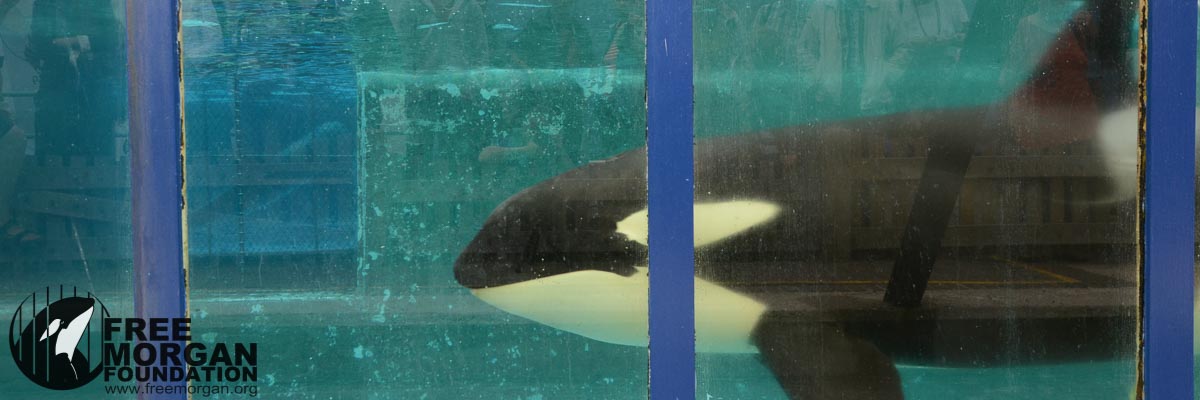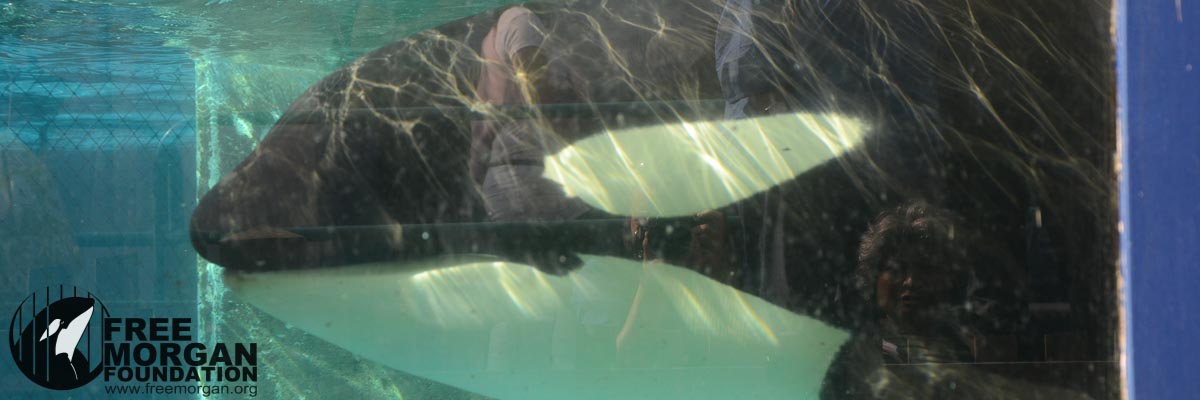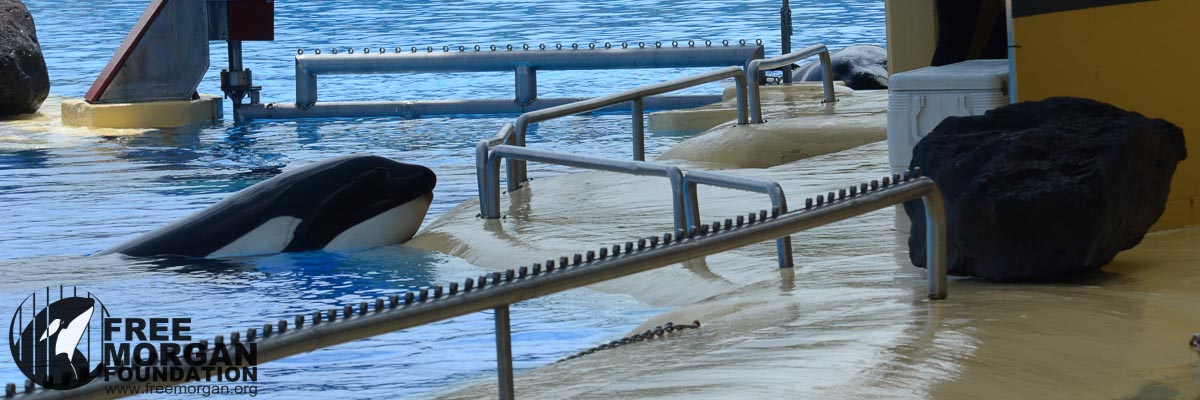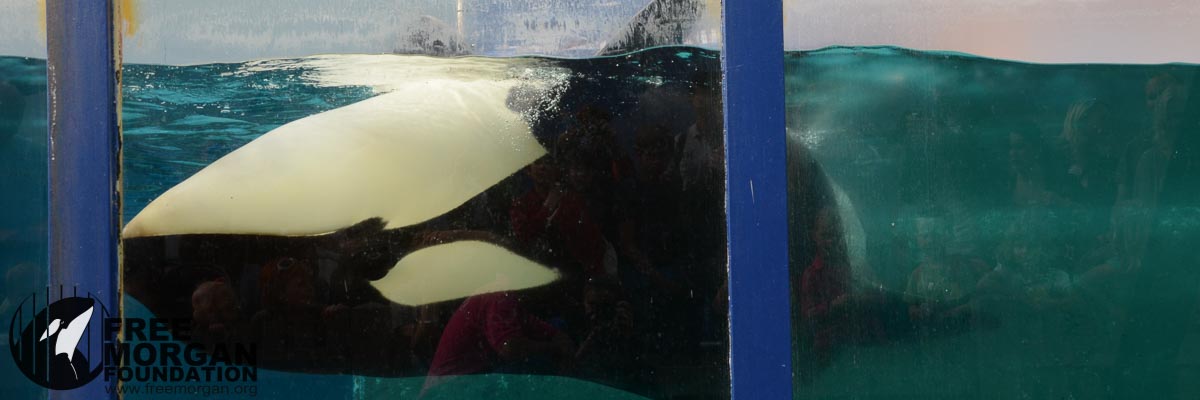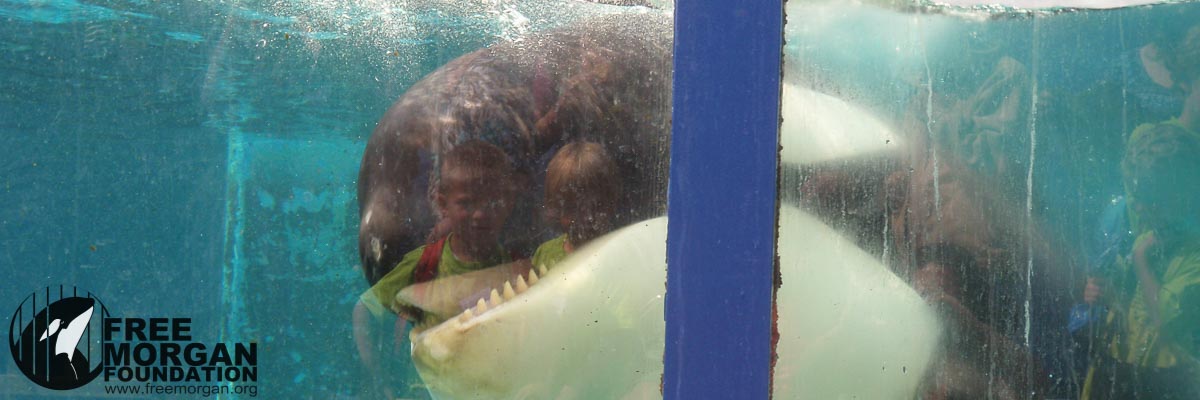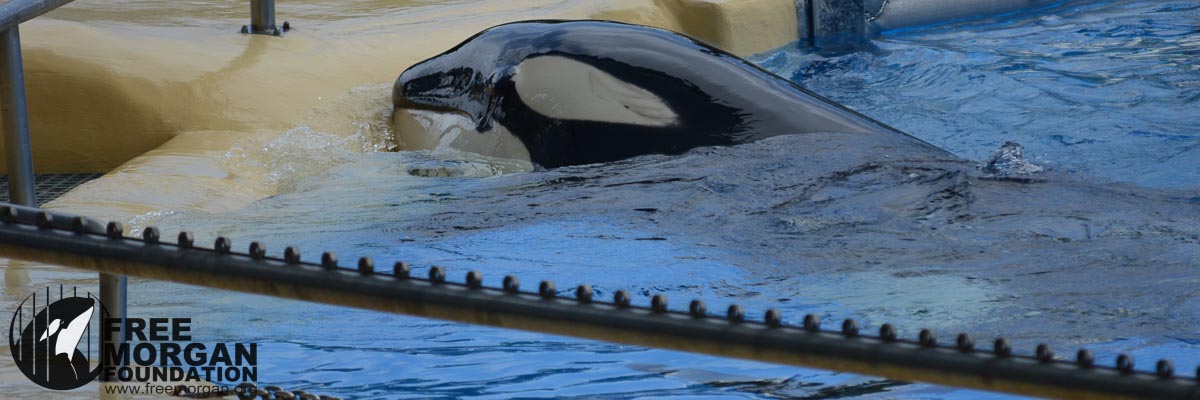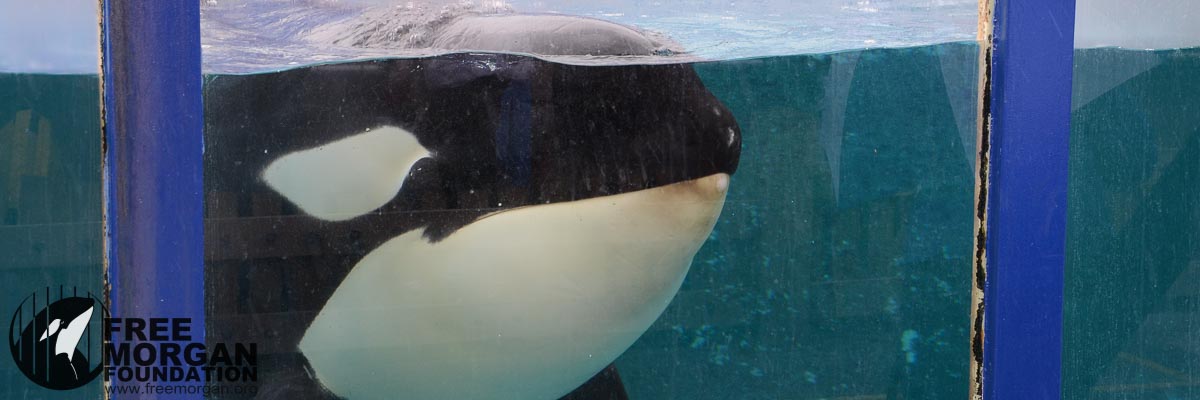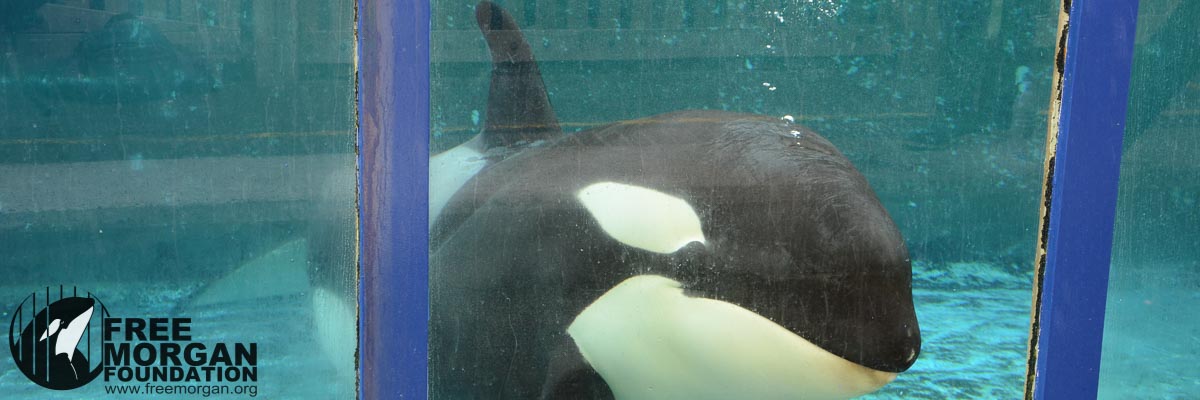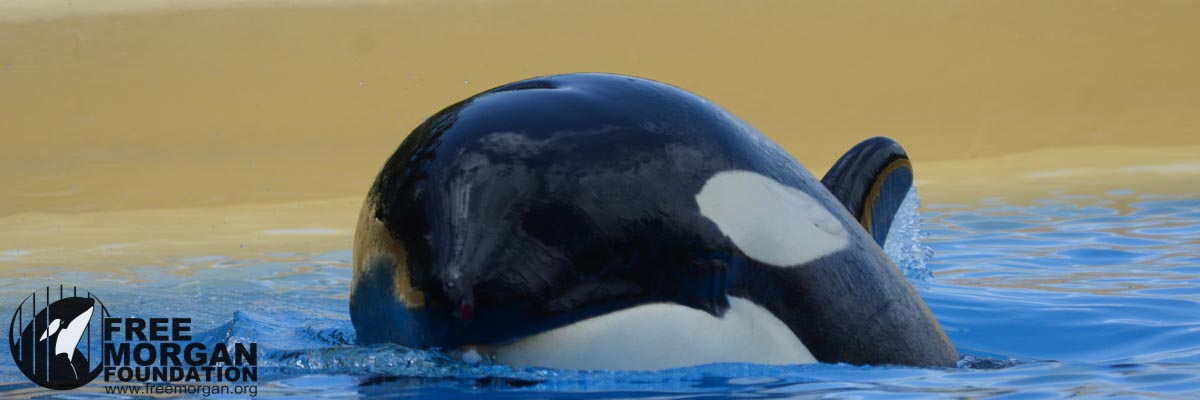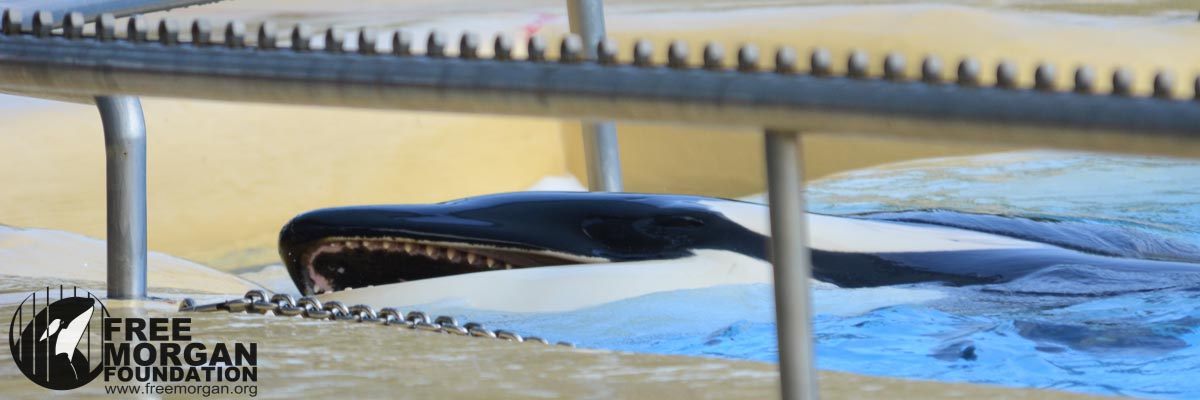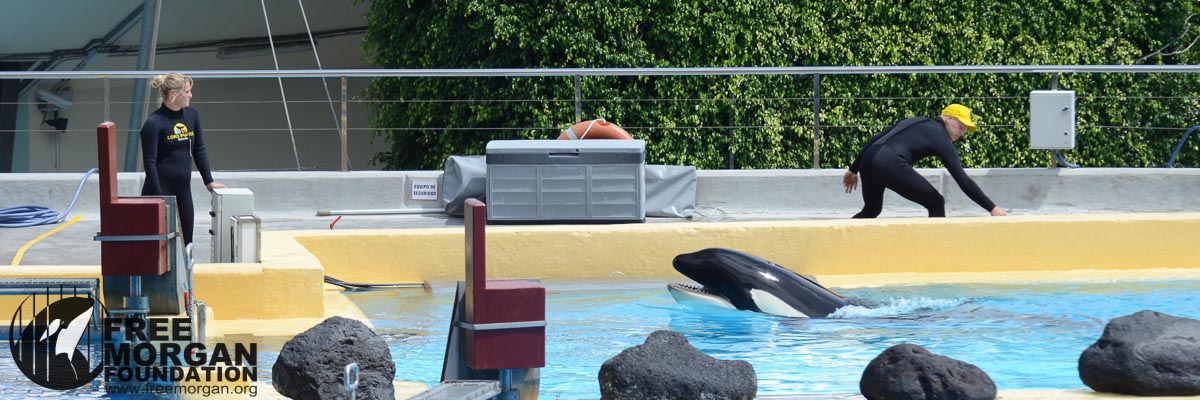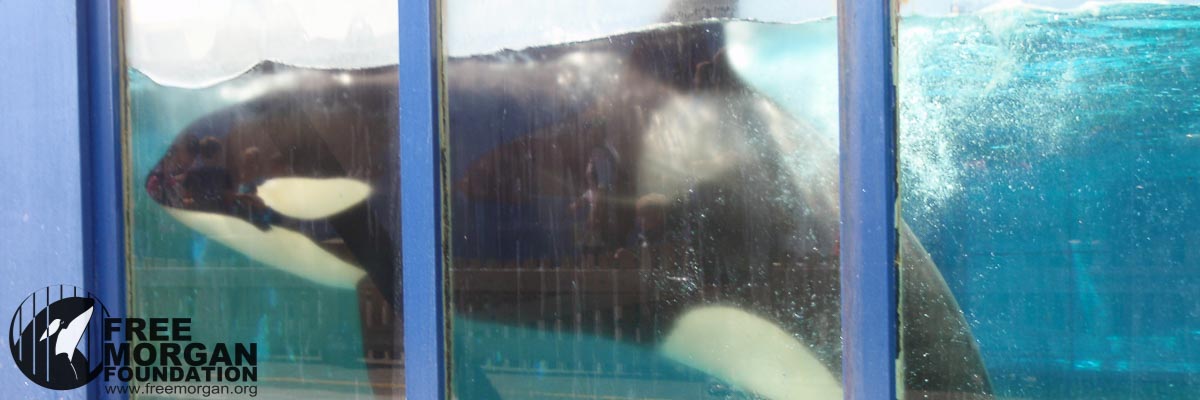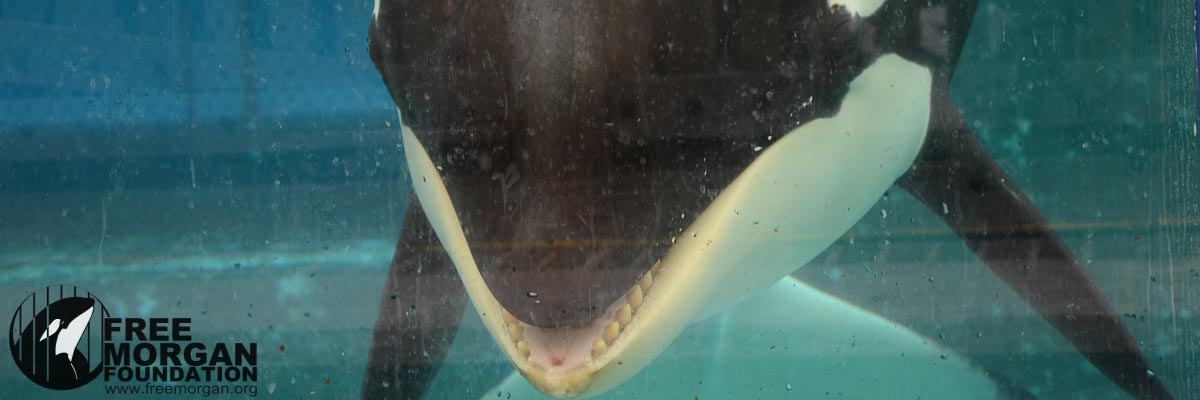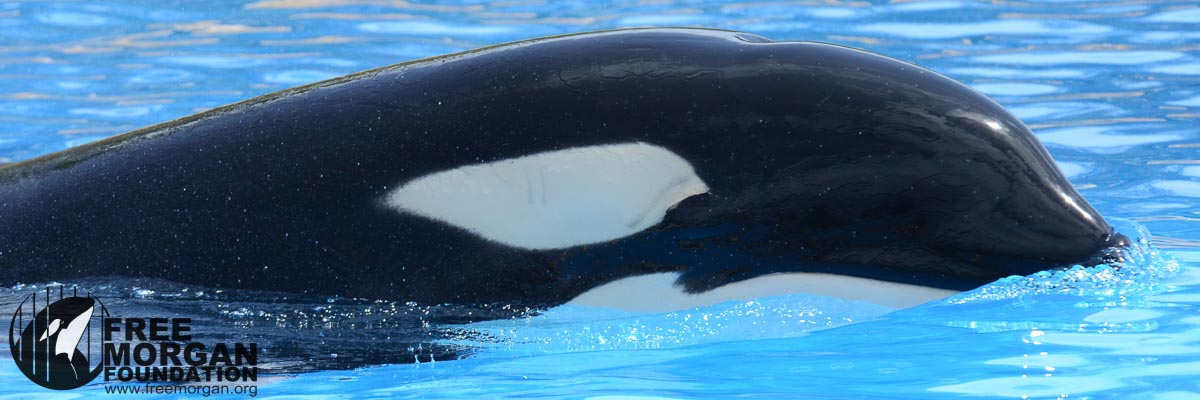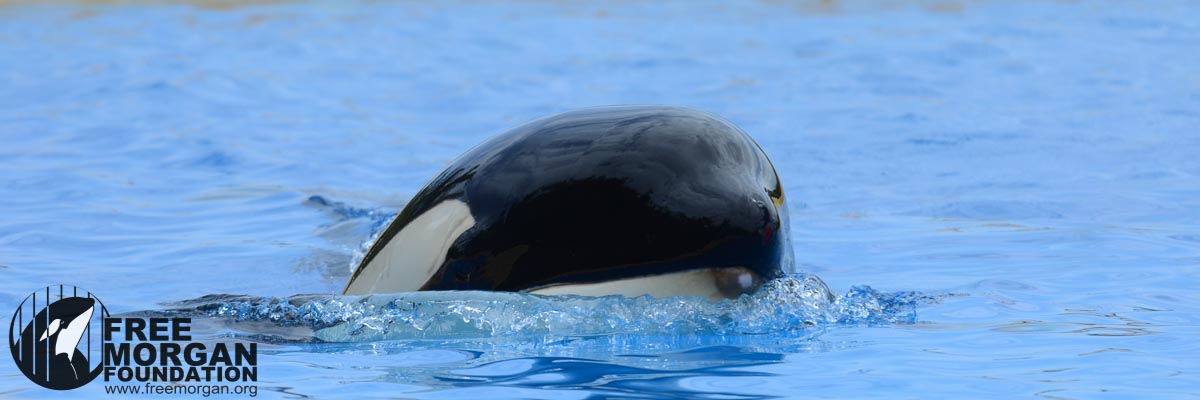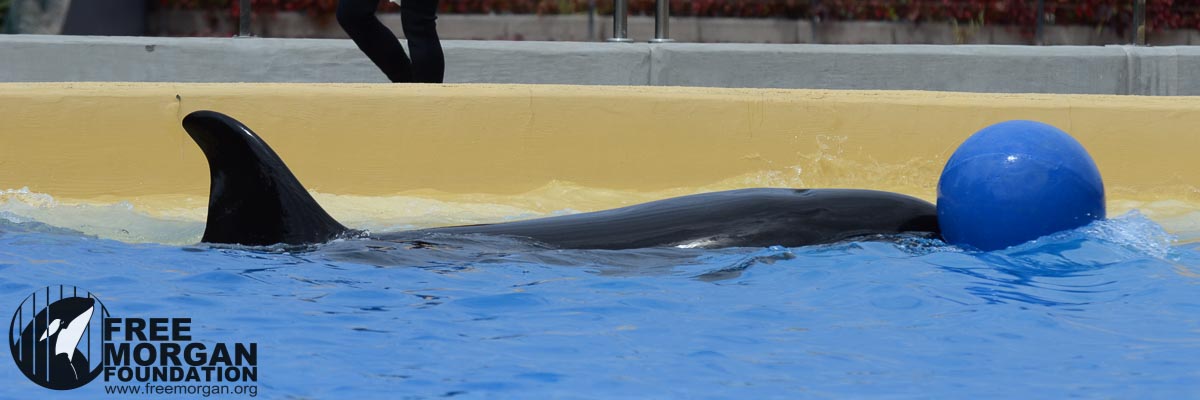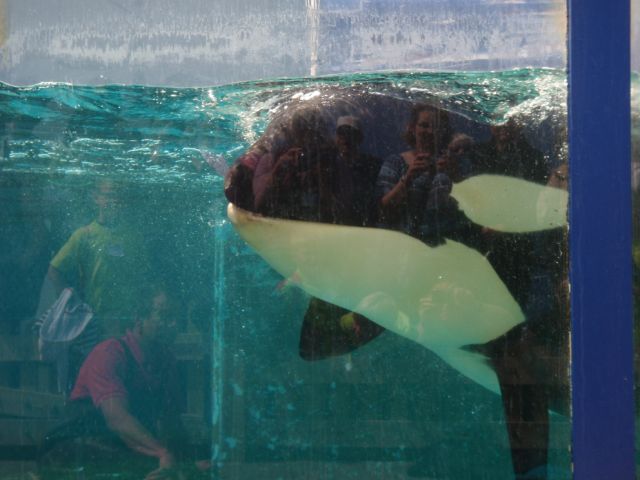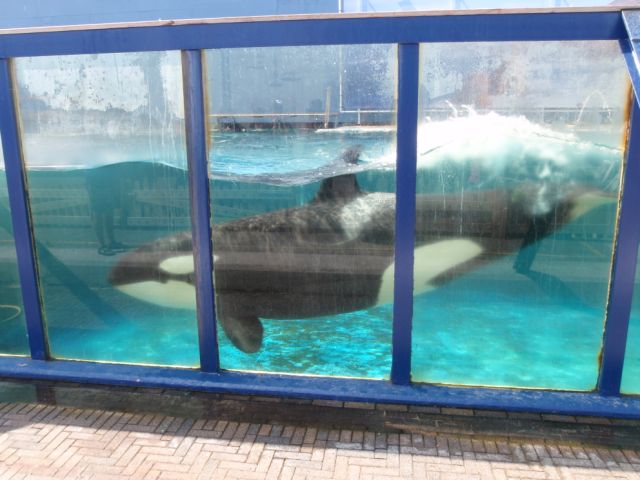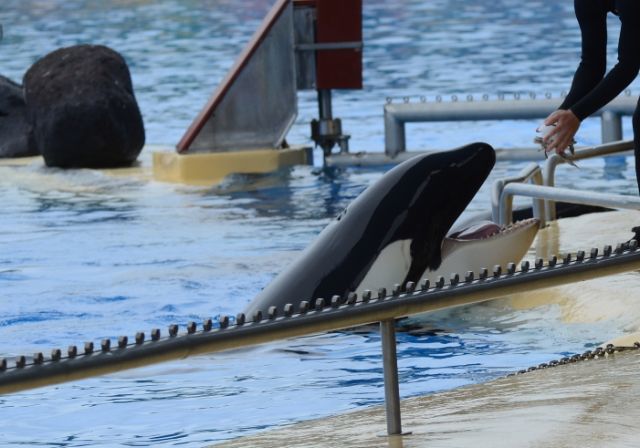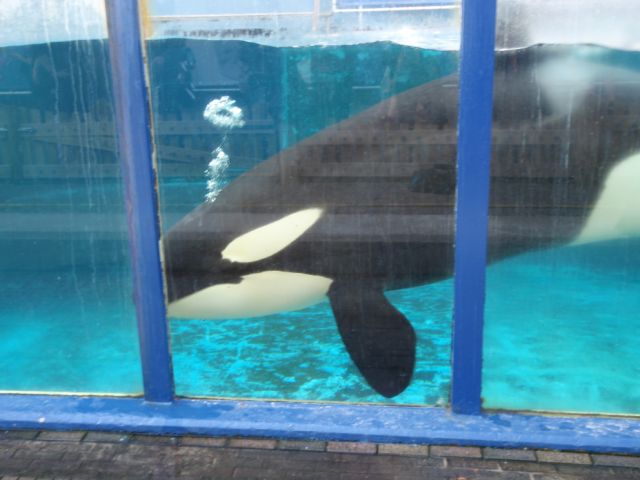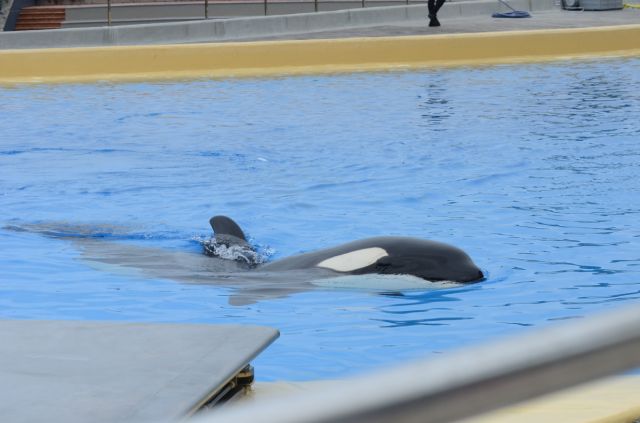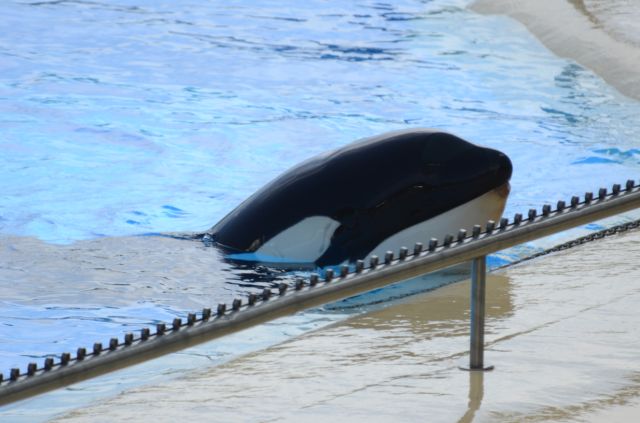- Can Morgan Be Released?
- Are there Any Examples of Successfully Rehabilitated Orca?
- Is it Better to Keep Morgan in Captivity?
- How Long Could Morgan Survive in Captivity Compared with in the Wild?
- Morgan Belongs to an Ecotype that Feeds on Herring. Will it Diminish her Chances of Survival in the Wild if she cannot Find a Pod to Hunt with?
- What if Morgan has Forgotten how to Hunt Live Fish?
- Indications are that Morgan is Deaf. If this is True, would this Affect her Chances to Survive in the Wild?
- Can We Learn Anything about Orca if we Return Morgan to the Wild?
- How will Returning Morgan to the Wild Affect Other Norwegan Orca?
Can Morgan Be Released?
Yes.
Morgan is a suitable candidate for release. She was born in the wild where she spent the first years of her life. At the time of her transfer to Loro Parque (29th November 2011), Morgan had spent more time in the wild than she had in captivity.
Scientific experts have been able to match Morgan’s vocalizations with a group of orca in Norway believed to be Morgan’s pod. Orca are incredibly intelligent, and evidence suggests that they have a great capacity for remembering, so this really increases Morgan’s chances of reuniting with her family pod.
Even if Morgan does not reunite with her family pod, she can still be released successfully. In Norway, orca pods have been known to accept and care for young orca who are not family members, such as the orca known as “Stumpy”.
Stumpy was resighted this year (2012), making it more than 15 years since he/she was first photographed in a different group from his/her natal group and making Stumpy 17 years old since first observed.
Back to topAre there Any Examples of Successfully Rehabilitated Orca?
Yes. Springer, a young female who had remarkable parallels to Morgan. Springer was found in another country from her origin, she was alone, she was dehydrated and she was emaciated (exceptionally skinny from no food). She was taken into captivity and rehabilitated, but unlike Morgan’s captors, the people looking after Springer actually released her back out into the wild. Springer has been seen just this last season, making it 10 years since she was released.
The other example is ‘Free Willy’ (Keiko) who was in captivity for 19 years and then was released. He spent time alone in the open ocean and then sought out humans. He was not held in captivity for the last years of his life, but was provided with food while able to swim freely in the wild. Certainly his life was much better in the open ocean (even if he got food from humans) than living in a small concrete box.
There are, additionally many more examples of other species of cetaceans which have been released back out into the wild after spending time in captivity. The most recent example is two bottlenose dolphins called Tom and Misha who have been released this year into the Mediterranean Sea, where they remain free and are doing well. They were in captivity in very bad conditions and for a long time.
Visit our Other Cetacean Releases page to find out more about successful whale and dolphin (including orca) releases from captivity.
Back to topIs it Better to Keep Morgan in Captivity?
The first thing someone should think about is about the captive environment. Living in a blue featureless cage, with no environmental stimulation (e.g., no currents, no temperature change, no other animals such as fish, no rocks, no sand, no tides) creates a very stagnant environment for any animal. For a wide-ranging species such as orca (who regularly travel more than 100 km a day), these tiny tanks with no stimulation are very debilitating on the animals mental and physical well being.
A tank can never be the ocean.
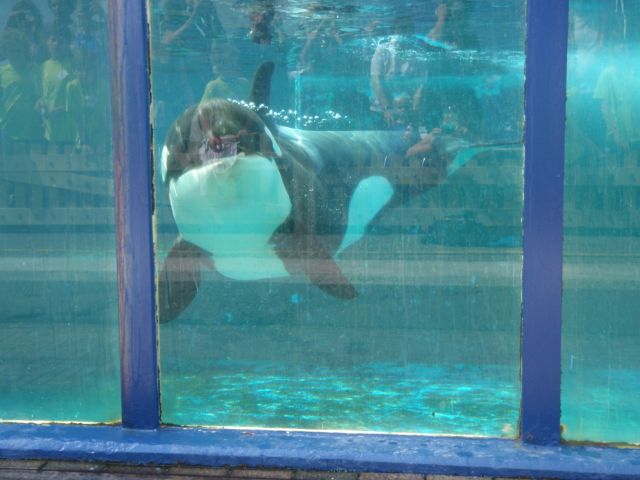
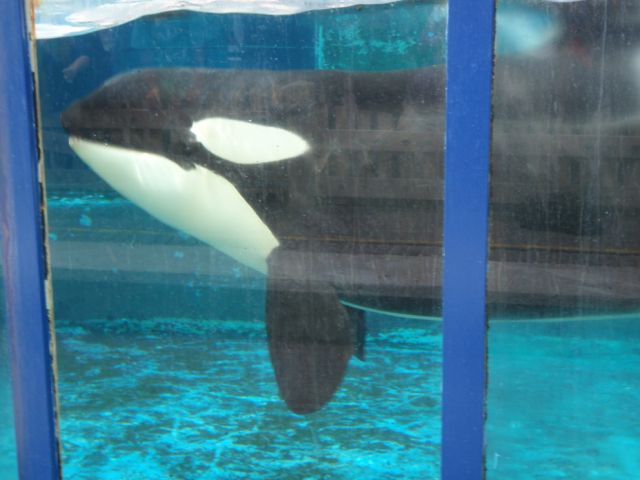
On top of this lack of stimulation, a captive orca has no control over it’s life. Everything she does (and when she does it) is totally controlled by the trainers. They control what food an orca gets and when she gets to eat. The trainers control where a captive orca can go in a tank system (as the trainers close the gates when they like, not when the orca choose). The trainers control when an orca can go into another tank (at times tricking them into following them with a bucket of food). The trainers also have the animals perform circus tricks in return for their food. Clearly this is not a life. It has been sugested that in order to keep some level of control of an orca, captive orca are often kept in a constant state of hunger.
These are all daily things Morgan has to put up with in captivity.
Back to topThere are better ways to see orca
Back to topHow Long Could Morgan Survive in Captivity Compared with in the Wild?
Based on studies of Northern and Southern populations of resident orca found off the coast of Washington State and British Columbia, female orca were found to have an average life expectancy of between 30-46 years and maximum longevity of 80 years (Olesiuk et al. 1990, 2005). Recently there is more evidence to indicate that female orca can live even longer.
In the wild, Morgan could live more than seven times as long as she could live in captivity, as the average duration of surviving in captivity is only 8.5 years (Jett & Ventre 2011).
Back to topMorgan Belongs to an Ecotype that Feeds on Herring. Will it Diminish her Chances of Survival in the Wild if she cannot Find a Pod to Hunt with?
Morgan’s closest known relatives are the P pod in Norway. This group has been seen feeding on herring, therefore it is assumed that Morgan would also typically feed on herring. However, that doesn’t mean that this is the ONLY food source for P group (or her).
There are instances around the world where orca feed on a wide variety of prey within their perceived food ‘type’. For instance, although the New Zealand orca are known to feed on elasmobranchs (sharks and rays), they have also been documented feeding on penguins, fish, dolphins and whales.
In a scientific paper looking at orca from California to Alaska scientists found that there may be dietary preferences by individuals within ecotypes (Newsome et al, 2009).
Although Morgan is from Norway and Norwegian orca have been labelled as ‘herring-eating’ they have also been recorded feeding on a range of prey (see Simila et al 1996 for one of the scientific papers about this). The diet of these orca has included herring (Clupea harengus), salmon (Salmo salar), saithe (Pollachius virens); mackerel (Scomber scombrus), eider ducks, (Somateria molissima), little auk (Alle alle), northern fulmar (Fulmarus glacialis) and jellyfish. Also, they have been recorded hunting and killing harbour porpoise (Phocoena phocoena) and minke whales (Balaenoptera acutorostrata) as well as grey (Halichoerus grypus) and harbour (Phoca vitulina) seals.
That is eleven different species of prey( that we currently know of). This suggests to some scientists that we are only just beginning to understand the complexity of the diet of this population of orca.
Back to topWhat if Morgan has Forgotten how to Hunt Live Fish?
Morgan’s release into the wild will not be a ‘drop and leave’ situation. She will be carefully trained to become fit and to actively chase fish. This is done through a process which includes retraining Morgan to take live fish (which she may do immediately). Loro Parque and the Dolfinarium Harderwijk do not / did not supply live fish to her, despite the fact that both facilities use sea water in their tanks so the fish could survive. They have not allowed scientists to try this either.
Although the orca in Norway specialise in hunting for herring by cooperatively herding the fish into tight balls (Simila & Urgate 1993), this doesn’t mean that this method is the only way for an orca to hunt herring (and as noted above, Norwegian orca feed on other species of prey too).
Furthermore, there is an example of an orca called Stumpy, from Norway, who was provisioned by no less than five groups of orca (who were not related to him; Stenersen & Simila 2004). He has been seen this year, so is still alive.
Back to topIndications are that Morgan is Deaf. If this is True, would this Affect her Chances to Survive in the Wild?
If Loro Parque believes their claim of Morgan being hearing impaired, then surely an updated test to confirm that suggestion would give everyone an answer. The only way to prove or disprove that Morgan is deaf or partially deaf, is to conduct accurate and scientific experiments. We have dedicated a page of Morgan’s website to the claim that she is deaf.
It is worth keeping in mind that Ridgeway and Carder published a paper in 1996 in which they report of a dolphin they captured from the wild. This dolphin was nine years old at time of capture (age calculated from annual rings on a sectioned tooth extracted from the dolphin). It was not only deaf, but also mute. It was a healthy dolphin when captured. This indicates that Morgan, even if completely deaf, could still survive in the wild.
Back to topCan We Learn Anything about Orca if we Return Morgan to the Wild?
If Morgan is kept in captivity we will learn nothing. If returned to the wild she will give us the chance to learn so much about her and her species.
Foote et al (2010) give examples of individual orca moving between locations and between prey ‘ecotypes’. All these papers just illustrate how little we actually know about orca and we shouldn’t always assume that what is known is the only way these animals live. If Morgan is kept in captivity we will learn nothing. If returned to the wild she will give us the chance to learn so much about her and her species.
Back to topHow will Returning Morgan to the Wild Affect Other Norwegan Orca?
The Norwegian orca have been subjected to intensive whaling (in the two decades after 1960, especially in 1969, 1970 and 1979), (Vongraven and Bisther,1995). The kills were both sex- and age-biased. This whaling is likely to have had an impact on the reproduction and social behaviour in the present Norwegian orca community.
Williams and Lusseau (2006) found that the removal of young female orca (from a population which had previously been harvested) was the most detrimental age-sex class for removal and likely to cause instability within the population. Therefore, for the conservation of the Norwegian orca population it is important that Morgan is returned, so she can contribute to the long-term survival of this species in Norwegian waters.
